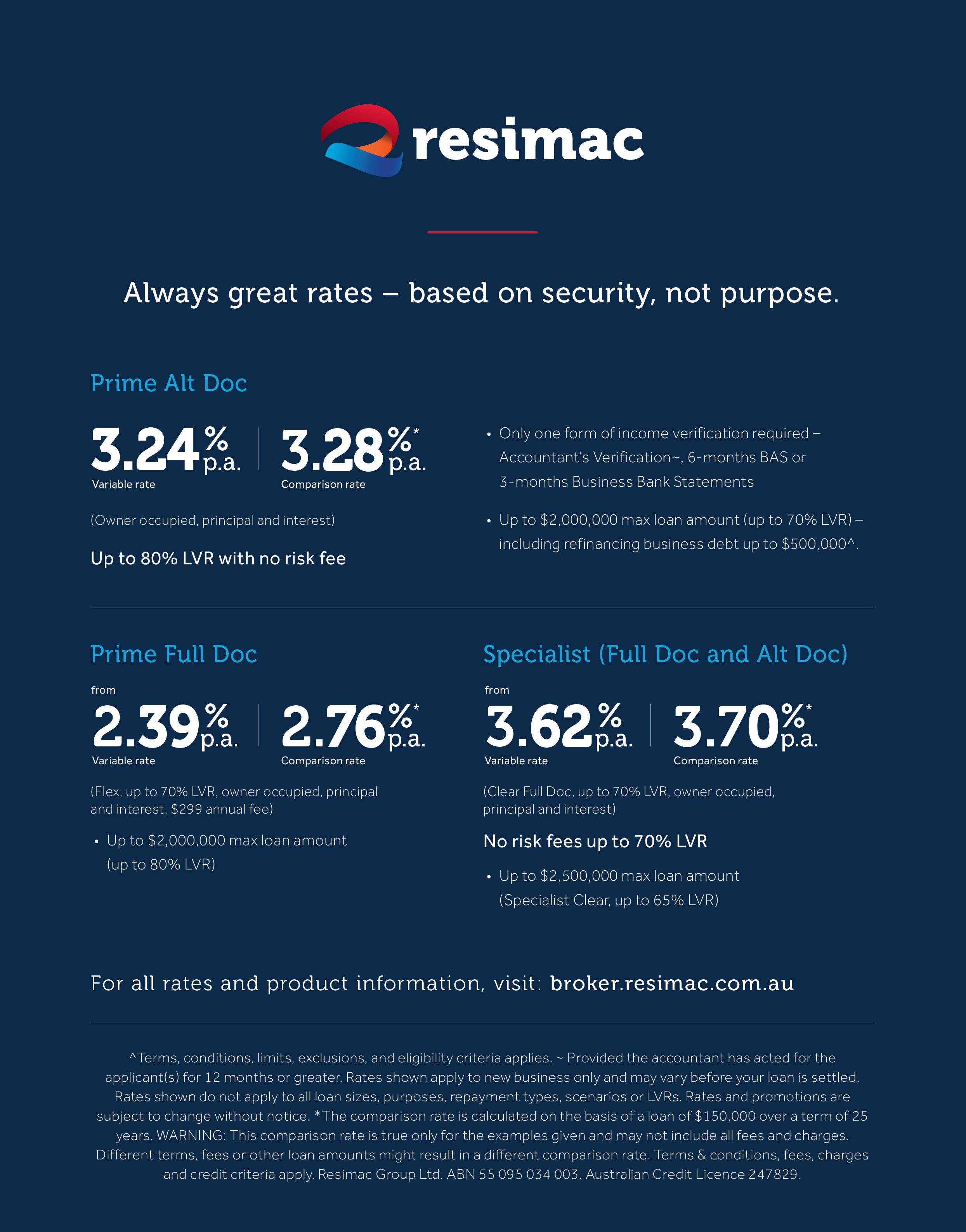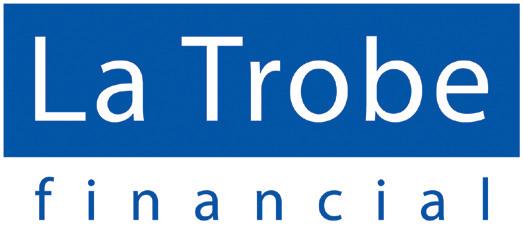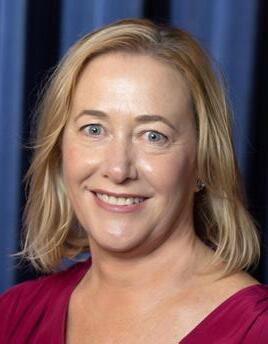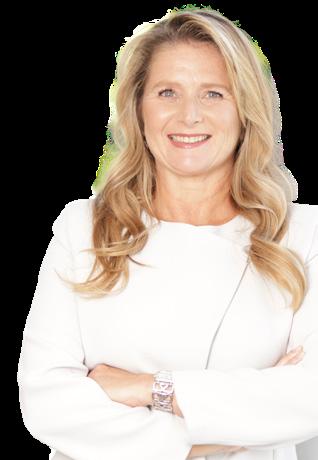POWERING AHEAD

Technology, broker partnerships and financial inclusion are fuelling Pepper Money’s growth
 Mario Rehayem
Pepper Money
Mario Rehayem
Pepper Money




Technology, broker partnerships and financial inclusion are fuelling Pepper Money’s growth
 Mario Rehayem
Pepper Money
Mario Rehayem
Pepper Money


FEATURES
NON-MAJOR BANKS ROUNDTABLE
A group of non-majors and brokers discuss the unexpected business dividends of the pandemic
Got a story or suggestion, or just want to find out some more information?
twitter.com/MPAMagazineAU
facebook.com/Mortgage ProfessionalAU
02 Editorial
A growing appetite for business loans
04 Statistics
Listings rise as the pace of growth in house values continues to slow
06 Opinion
A watershed moment is ahead with CAFBA’s push for industry self-regulation
14 Commercial property
The renaissance of the commercial property market
SPECIAL REPORT
MPA honours 2022’s top-performing brokers who have set the benchmark for excellence in critical times


BIG INTERVIEW
MARIO REHAYEM

Pepper Money’s CEO on the non-bank’s drivers of success – and his key motivators
12
FEATURES
SMEs are eager to bounce back from a tough two years – and brokers can help them fund their recovery

18 SME lending
Helping small businesses find new sources of finance
28 Asset finance
How brokers can tap into the demand for asset and equipment finance
32 Invoice finance
A finance solution for businesses needing access to cash flow
62 Tips for avoiding costly errors
Five common financial mistakes your business can plan to avoid
66 Delighting clients
Stand out from the competition with small surprises that create raving fans

70 Brokerage insight
Smoother processes are simplifying finance for Fabio De Castro’s clients
72 Other life
Once a pro golfer, broker Luke Whitbread still enjoys a competitive challenge
FEATURES EXPERT SPOTLIGHT
Chris Paterson talks about his new role as Resimac’s GM – distribution and his focus on the broker experience 08

MPAMAGAZINE.COM.AU
NOW ONLINE:
Our daily newsletter. Keep on top of property market trends, business strategy, and what industry leaders have to say.
This is an exciting and challenging period for Australia. By the time this issue of MPA goes to print, the nation will be just a few days away from heading to the polls to decide who will govern the country for the next three years.
Whether Liberal or Labor take the reins, the next government will have a lot on its plate. The war in Ukraine has driven up oil prices, and the flow-on effect is pushing up the cost of most goods and services. Supply chain issues are continuing to make life more difficult for the small to medium-sized businesses that are the engine room of the economy.
Australia’s inflation rate currently sits at 5.1%, a lot higher than the Reserve Bank’s targeted rate of between 2% and 3%. As a number of economists had predicted, the RBA reacted by lifting the official cash rate on 3 May by 25 basis points to 0.35%.
On the flip side, the unemployment rate is at 4% – the lowest since the 1970s; migrant workers are starting to flock back into the country to fill labour shortages; and the travel industry is rapidly returning to pre-pandemic levels.
SMEs are increasingly looking for options to boost their businesses as the nation puts COVID in the rear-view mirror. Businesses need finance to hire more staff, buy equipment, extend buildings, or open new premises and increase their cash flow.
This edition of MPA takes an in-depth look at the commercial lending market, dissecting four sectors – commercial property, SME lending, asset and equipment finance, and debtor finance. We reveal the diverse range of loan products and services provided by major banks and non-bank lenders to brokers and their clients.
SMEs are hungry for loan opportunities that are fast, flexible and suit their circumstances, whether they are new businesses or established enterprises.
The possibilities for brokers are vast – and not just for niche commercial finance brokers. The latest MFAA Industry Intelligence Service report shows that the number of residential mortgage brokers also writing commercial loans rose 16% year-on-year in the period April to September 2021.
Apart from opening the door to new customers, the commercial lending market enables brokers to create ‘stickier’ relationships with their existing residential clients by identifying those who also own businesses and exploring how they can help them
Australia is a small business economy with SMEs making up about 98% of all businesses. More people want to set up their own businesses too. According to Xero, there were 34% more small business registrations in 2021 than in 2019.
It’s the perfect time for brokers to focus on commercial finance, and this edition outlines the options available.
Antony Field, editor, MPAwww.mpamagazine.com.au
EDITORIAL
Editor Antony Field Journalists
Mina Martin, Bennett Richardson
Contributors
Milton Collins, Helen Baker, David Gill
Production Editors
Roslyn Meredith, Karen Atienza
ART & PRODUCTION
Designers
Loiza Razon, Khaye Cortez
Customer Success Manager Andi Zbojniewicz
SALES & MARKETING
Publisher Claire Tan
CORPORATE
Chief Executive Officer
Mike Shipley
Chief Operating Officer
George Walmsley
Managing Director Justin Kennedy

Chief Information Officer Colin Chan
Human Resources Manager
Julia Bookallil
EDITORIAL ENQUIRIES
tel: +612 8437 4784 antony.field@keymedia.com
SUBSCRIPTION ENQUIRIES
tel: +61 2 8311 5831 • fax: +61 2 8437 4753 subscriptions@keymedia.com.au
ADVERTISING ENQUIRIES claire.tan@keymedia.com
Key Media Australia (Mortgage) Pty Ltd
tel: +61 2 8437 4700 • fax: +61 2 9439 4599 www.keymedia.com
Sydney, Auckland, Denver, London, Toronto and Manila
MortgageProfessionalAustralia is part of an international family of B2B publications and websites for the mortgage industry
AUSTRALIAN BROKER simon.kerslake@keymedia.com
T +61 2 8437 4786
NZ ADVISER alex.rumble@keymedia.com
T +61 2 8437 4708
CANADIAN MORTGAGE PROFESSIONAL john.mackenzie@keymedia.com
T +1 416 644 8740
MORTGAGEBROKERNEWS.CA corey.bahadur@keymedia.com
T +1 416 644 8740
MORTGAGE PROFESSIONAL AMERICA katie.wolpa@keymedia.com
T +1 720 316 7423
MORTGAGE INTRODUCER (UK) matt.bond@keymedia.com
T +44 7525 456869

SFG has helped my business succeed by providing invaluable advice on business strategy, process improvements & access to the best software. SFG has been critical to our success.
CORELOGIC’S NATIONAL Home Value Index (HVI) showed a 0.6% gain in February, marking the 17th consecutive monthly increase in the index. But the pace of growth in Australia’s housing values has continued to trend downwards since April 2021, with February’s gain the lowest monthly growth rate since September 2020. Growth fell from 1.1% in January and from a cyclical peak of 2.8% in March 2021.
Capital cities across the country also reported a slowing trend in value growth. Showing the sharpest slowdown were Sydney (-0.1%), which
57%
of employees would forego a pay rise/promotion for work flexibility
would take a wage cut to have more flexible work hours
posted the first decline in housing values since September 2020, and Melbourne (0.0%), where housing values were unchanged over the month, following similar results in December (-0.1%) and January (+0.2%).
Growth eased less noticeably across the smaller capitals. In Brisbane, Adelaide and Hobart, housing values rose by 1% plus in February.
Regional markets have also been somewhat insulated against the conditions that are slowing growth, with five of the six rest-of-state regions recording monthly gains in excess of 1.2%.
21%
of employees expect to return full-time to the office
Property listings activity has been high across the country, with national listings surging 27.3% month-on-month in February, when they were also 13.5% higher than in February 2021.
19% believe the traditional office will become obsolete in next decade
Research by Rent Rabbit has revealed the top 10 suburbs in Australia that are in dire need of more rental accommodation due to incredibly low vacancy rates, low average weekly household incomes, and below average socio-economic status.
Australians have embraced the regional life over the past two years, with quarterly migration from capital cities to regional areas averaging 15% higher than before COVID-19, due in part to remote working trends and the easing of border restrictions.
TOP 5 LGAS BY % GROWTH IN MIGRATION FROM CAPITALS
Source: CBA and Regional Australia Institute RegionalMoversIndex,December2021QuarterReport
Men have a higher overall share of property ownership in Australia, with 29.9% of dwellings (whether single or multiple) fully owned by men, compared to 26.6% of properties exclusively owned by women.
Aspiring homeowners believe the great Australian dream is more achievable in WA than in any other state, with 60% of Western Australians feeling homeownership is achievable (60%) and 67% saying it’s important.
Those who believe homeownership is achievable
Those who consider homeownership important
COMMERCIAL AND asset finance brokers
in Australia operate under a self-regulating framework. This framework allows for broker education and expertise to manage practice rights within the industry and ensure the best outcomes for commercial borrowers.
Since its inception in 2008, the Commercial & Asset Finance Brokers Association of Australia has lobbied strongly against any government intervention in commercial lending, and both the Banking Royal Commission and the Productivity Commission agreed that commercial broking has proved itself able to provide suitable customer

CAFBA’s board, under the advisement of a select Self-Regulation Committee, has come to the consensus that pursuing a Professional Standards Scheme (PSS) is the most effective measure the industry can take to ensure the continued high standards of commercial broking and maintain the industry’s selfregulating framework in the long term.
A PSS will implement a range of measures to improve professional standards and practices, ranging from effective risk management strategies and continuing professional development programs to codes of ethics and conduct and integrity systems.
Practising Accountants), operate under this model, which provides government recognition of the industry’s professional standards and capability.
There are distinct benefits to being part of a PSS. One of the key advantages is that it distinguishes an association and its members as a recognised profession. In a competitive market, this is critical because it’s increasingly difficult for consumers, governments and even aspiring professionals to be able to tell the genuine professional from the growing field of people purporting to be professional.
For clients of CAFBA members’ services, this makes it very difficult to know who to trust. They should be able to be confident that their service provider has formal professional standards that they must uphold; that there is a body of professionals to make sure their service provider upholds them; and that if anything does go wrong, there will be insurance or assets available to pay damages awarded by the court.
By successfully applying for a Professional Standards Scheme, CAFBA members would be able to show clients that they satisfy all of the above, and that they are participating in an initiative to deliver ongoing improvements in professional standards and client protection.
outcomes. As such, there have not been any recommendations to regulate it.
CAFBA, which represents more than 1,000 firms and commercial and asset finance brokers nationwide, is very proud of this, but we also understand that the commercial finance industry needs to keep evolving. A key tenet of CAFBA’s strategy moving forward is to maintain our self-regulating framework while increasing professionalism across the industry.
As the association of commercial finance brokers, it is incumbent on CAFBA to set and maintain standards that would be expected of a professional industry. As a result, there has been much discussion within the association about professionalism and how this is measured, particularly in the context of self-regulation.
A Professional Standards Scheme is a legal instrument that binds associations to monitor, enforce and improve the professional standards of their members, and to protect consumers of professional services. Any Australian professional association that meets the definitions and criteria outlined in professional standards legislation can apply for a PSS. The councils decide whether to approve such an application after considering a range of matters related to demonstrating commitment to professional standards and selfregulation. In return for these commitments, Professional Standards Schemes cap the civil liability or damages that professionals who take part in an association’s scheme may be required to pay if a court upholds a claim against them. Many other industry associations, such as CPA Australia (for Certified
The process to obtain approval is lengthy and involved, but the benefits justify the effort. While we have commenced discussions on the Professional Standards Scheme application, we have to implement changes that will ultimately satisfy a successful application. CAFBA already has high standards for membership. Under the PSS we must be able to monitor and prove that these standards are being adhered to.
CAFBA’s decision to pursue a Professional Standards Scheme is a watershed moment in commercial finance broking as we look to maintain our self-regulating status into the future. It is far more preferable that we determine our own criteria and destiny than let it be determined for us by regulators.
A key advantage of a Professional Standards Scheme is that it distinguishes an association and its members as a recognised profession
Setting up a Professional Standards Scheme will be a watershed moment for CAFBA, increasing trust in the organisation and its members, says CEO David Gill

CHANGE HAS been a constant at Pepper Money, and while the non-bank lender has been around since 2000, there’s been a lot happening in the last 12 months for the business that never stands stills, according to CEO Mario Rehayem.
Pepper Money successfully listed on the ASX last May, and its home loan originations rose 89% to a record $6.4bn for the year ended 31 December 2021. It also won Non-Bank of the Year at the Australian Mortgage Awards 2021, launched a Near Prime Clear product in March of this year, and in April acquired 65% of online direct-to-consumer asset finance broking platform Stratton Finance.
Rehayem has been at Pepper Money for more than 11 years. He started off as director of sales and distribution, was promoted to managing director Australian mortgages and personal loans, and for the last five years has been CEO. He has seen incredible changes in the company that’s now one of Australia’s largest and most trusted non-bank lenders.
“It’s been a fantastic journey to date,” says Rehayem. “I still do remember my first day here in 2011. For the entire year of 2011, we settled $170m. In today’s world we would settle that on average in a week, based on what we originated in 2021.”
When Rehayem joined Pepper Money, he says the company had about 60 staff – now there are more than 900.
“This business has always prided itself on having very strong morals, ethics and values and a family-type feel. We haven’t let go of that,” he says.
“It’s very important for any business success to get the culture right. There’s no siloing; there’s the utmost level of respect for one
mortgages, asset finance, commercial real estate and personal loans. The company also operates in New Zealand.
“Our core competencies haven’t changed; they have evolved and matured. But we’ve always tried to be at the forefront of our credit expertise and understanding – who to lend to,
another – can-do, balanced and real are our values that we live by on a day-to-day basis.”
Rehayem says Pepper Money has gone from a name that people didn’t recognise to becoming a household brand that has assisted over 300,000 customers.
“Today, Pepper is at the forefront of creating financial inclusion by offering and designing products that cater to those customers who are underserviced by the industry but are very much deserving to have a new home or a new car,” he says.
Pepper Money’s product range has also expanded from a focus on non-conforming loans to now offering a diverse suite of prime, near prime and specialist loans across
how to lend to them, and what the price or risk is associated to that,” Rehayem says.
“We’ve also been very much a big believer and advocate of the broker channel, and we’re 100% still supportive of the broker channel 20-plus years later. We’ve got very strong alliances with our brokers, because they trust the brand. There’s transparency, and brokers trust Pepper Money to get the deal done.”
Looking back at his progression to CEO, Rehayem says he is grateful to have had strong mentors.
“The number one motivator for me today as CEO of Pepper Money is to recreate the chances that were given to me but do that for the wider business.”
CEO Mario Rehayem, who joined the company 11 years ago, talks about its journey to success – and what’s to come for the non-bank
“We’ve got very strong alliances with our brokers because they trust the brand. There’s transparency, and brokers trust Pepper Money to get the deal done”
Name: Mario Rehayem
Title: CEO

Company: Pepper Money
Years in the industry: 21
Career highlight: “Working with the brilliant people that make Pepper Money what it is today has fuelled my energy and passion to do more for others, particularly the underserved in our community.”
Biggest career challenge: “Navigating through COVID. When it hit in 2020, Pepper was still part of a global company. It was all of the companies being hit at the same time on a global scale. There were a lot of sleepless nights. We did everything we could to support thousands of customers.”
Through mentoring and succession programs, the company is investing in people who Rehayem believes will be future leaders.
Family and family values are also very important to him. “I get up every morning, and there’s no better feeling than hugging my kids before I go to work – that gives me the confidence walking into work each day that I’ve got a very strong family backing me, coupled with a very strong management team behind me.”
Creating financial inclusion for customers is a major motivator.
“I’ve never worked at a business that has had such proactive customers’ reviews coming directly to the CEO, that have thanked Pepper Money … because no one else gave them a go but Pepper Money,” says Rehayem. “It reminds you that what we’re doing is actually making a real difference.”
Rehayem says technology is crucial to the business, and Pepper Money is proud of delivering consistent, market-leading turnaround times despite a nearly 90% rise in loan originations year-on-year.
says Rehayem. “We honour whatever that decision is on that two-minute approval.”
Pepper Resolve, a tech stack integrated into aggregator platforms or CRMs, gives brokers an alternative if their customer has been rejected by another lender.
Rehayem says Pepper Approval Confidence is also being piloted with an aggregator – this provides real-time credit decisioning as a broker is keying information into the CRM.
“This is a market first for any non-bank, and the early feedback has been overwhelmingly positive.”
The recent launch of Pepper Money’s Near Prime Clear loan has proved highly successful.
“It’s taken off faster than any other product we’ve launched in the market in 20 years,” Rehayem says. “Brokers have swarmed to it, and they absolutely love it.”
There has also been a heavy focus on “living the life of a broker” and using this to improve processes.
“If you live a day in their life and understand their pain points, and you create processes to avoid those, you become a much
April 2021 Pepper Money celebrates 21st year in business
May 2021 Company lists on the ASX
July 2021 Appoints new general manager mortgages and commercial lending, Barry Saoud
October 2021 Wins Non-Bank of the Year at Australian Mortgage Awards
December 2021 Completes sixth public securitisation for 2021, bringing the total raised over the year to $4.8bn
February 2022 Delivers full-year results exceeding IPO forecasts
March 2022 Launches Near Prime Clear loans
April 2022 Acquires 65% of Stratton Finance
tional banks and other commercial lenders”.
“We’ve made it much easier for our brokers to deal with Pepper Money, but it’s also our consistency and transparency in our credit decisioning.”
The non-bank has implemented tech advancements such as electronic signatures, biometrics, auto approvals, electronic valuations and real-time payments. “We’re getting sharper, smarter and better every day in our ability to deliver automated decisioning for our customers and our broker partners … it allows brokers to have the utmost confidence in having a high probability to yes.”
Pepper Product Selector provides brokers with information on the company’s loan products, rates and fees in less than two minutes,
easier, more transparent lender to deal with, and brokers do appreciate that.”
Pepper Money’s commercial real estate finance offering experienced exponential growth in the back half of 2021, and this continues in 2022, Rehayem says.
“More and more commercial brokers are starting to take on the Pepper Money service, and what they’re finding is that we’re less cumbersome, more transparent, and we’re turning many deals around much faster than many of our peers.”
These include its prime product and near prime product, which Rehayem says is very rare in the CRE space and “captures customers that are underserved by tradi-
Both full-doc and alt-doc loans are also available, with “sweet spot” features such as unlimited cash-out, refinancing, and the payment of tax debts. These allow a customer to grow their business by cashing out some of the equity they have built in their commercial property.
“We know the SME market very well,” Rehayem says. “Last year alone we assisted in excess of 30,000 SME customers. The more we understand that segment, the more products that we will innovate and launch through CRE mortgages and asset finance.”
Thanking all the brokers who have supported Pepper Money over the years, he says: “Watch this space, because we’re coming out with exciting products, we’re coming out with exciting technology – it’s all designed around giving them the ability to serve customers faster, better, and freeing up more voids in the market.”
“Commercial brokers are finding that we’re less cumbersome, more transparent and are turning deals around much faster than many of our peers”



Australia’s small business owners are eager to bounce back from a tough two years and need finance to help their recovery. Offering solutions for everything from SME lending to invoice finance and loans for assets and equipment and commercial property, brokers can be a one-stop shop for their clients

IF SMALL businesses are the engine room of the Australian economy, brokers and lenders are the fuel that keeps their motors running.
SMEs now have the COVID-19 pandemic in their rear-view mirror, and while not all may be racing ahead as the economy recovers, many are switching gears and looking to accelerate their growth.
After a stop-start 2021, with lockdowns and constantly changing pandemic rules forcing many businesses into survival mode, 2022 has been a godsend.
State and international borders have reopened, COVID restrictions have been lifted, and people are returning to work, going shopping and eating out again.
While other problems have arisen to throw a financial spanner in the works – including higher fuel costs, supply chain disruptions, labour shortages and rising inflation – business owners are embracing the opportunities of a post-pandemic world. They want to restock, buy new assets and equipment, build new premises, hire new staff, and are looking for finance options, paving the way for brokers to offer their services as skilled and trusted financial experts and for lenders to provide a wide range of loan products.
And that customer base doesn’t just cover existing small businesses; a recent Xero report shows that many new SMEs have been set up in the past few years, with new business registrations in Australia now 34% higher than in 2019. No doubt a number of new small business owners were previously employees who have rethought their lifestyles and realised the possibilities of digital commerce.
Ironically, problems such as supply chain disruptions and rising costs also provide brokers with the chance to talk to clients about ways to improve their cash flow
In MPA’s Commercial Lending Guide, industry leaders and experts discuss four sectors within the world of business finance: commercial property, SME lending, asset and equipment finance, and invoice finance.
They outline for brokers the advantages of offering services to their clients in these areas, the products available, and how diversification can benefit them as well as their customers. They also discuss market trends and what’s ahead for commercial finance over the next 12 months.
The latest industry figures show that more and more residential mortgage brokers are prepared to expand their horizons by diversifying into the commercial sector.
According to the latest MFAA Industry Intelligence Service report, commercial loans settled by mortgage brokers reached their highestever value during the six months from April to September 2021, totalling $13.4bn – up $4bn, or 42.9%, year-on-year.

The number of mortgage brokers also writing commercial loans also reached a new high of 5,268 brokers, a 16% increase year-on-year.
For those looking to benefit from the potential of this fast-growing finance sector, MPA’s commercial lending edition is a great guide to what’s on offer.
migration, and a desire for businesses to expand as the economic recovery from COVID continues
THE COMMERCIAL property market is enjoying a renaissance after a tough period.

The pandemic resulted in office workers retreating to their homes en masse, while SMEs hunkered down, many relying on JobKeeper and JobSeeker to survive. But government support and stimulus packages helped keep businesses afloat and ready to pivot when economic conditions improved.
That time is now. ABS lending indicators show the value of new business loan commitments for construction rose 136% from $1.62bn in November 2021 to $3.84bn in January 2022. New business loans to buy property increased 11% from $6.75bn to $7.79bn over the same period.
As the economy recovers, so does the appetite for commercial property finance. Commercial real estate services giant JLL reported in March that strong tenant demand in the Sydney CBD showed that businesses were looking to occupy more office space.
MPA talks to Liberty’s group sales manager, John Mohnacheff; ANZ’s associate director, property, Daniel Gradwell, and its Commercial Broker leadership team; and Pepper Money’s head of commercial, Malcolm Withers, about their outlook for the sector and the opportunities they see for brokers.
An appetite for commercial property Mohnacheff says the last 12 months have caused serious concern for the Australian economy due to the impacts of COVID-19, natural disasters and international conflict.
“Nevertheless, the commercial property market has proven itself remarkably resilient, and demand for commercial lending has remained strong. And, as the residential market becomes increasingly competitive,
“However, there is a particularly strong appetite for properties likely to appeal to tenants, which can often provide stronger rental yields as well as fewer vacancy periods.”
For retail and hospitality properties, location is key, says Mohnacheff. Properties on main streets where there is ample foot traffic have an advantage over those tucked away on side streets.
“Similarly, offices and warehouses in central and convenient locations are always in high demand. As increased migration from capital cities to regional areas continues, there’s also been a recent boost in the regional market,” he says.
ANZ’s Commercial Broker leadership team explain that initially banks approached the COVID crisis with caution, with speculation in the market focusing on economic outcomes and stress on property valuations.
“There was short-term volatility, but as government stimulus, including commercial rent regulations, was confirmed and businesses adapted to different approaches, volatility stabilised and then we saw valuations strengthen,” the team say.
“Now, commercial property appetite among the banks is as strong as it’s ever been, and
more investors are setting their sights on the commercial arena to help build their passive income and grow their property portfolio.”
Mohnacheff says savvy investors understand that investing in commercial property is a long game – “it can be up to 10 years before they see significant growth in the value of their asset”.
more finance offerings are coming to market with simplified approaches to lending less than $3m. There remain some pockets of weakness for retail and office given postpandemic uncertainty in some sectors of the economy, but brokers should be approaching their clients with confidence.”
Commercial property finance activity is ramping up, boosted by a return to the office, regional
“The other major winner through COVID has been industrial property, with storage, warehousing and logistics requirements rising strongly as online shopping has taken off” Daniel Gradwell, ANZ
Gradwell says the property development segment has been strong throughout COVID, although with mixed results across the sectors. Residential developments have boomed, while approvals and development finance for higher-density housing close to the CBD have been weak until recently.
“The other major winner through COVID has been industrial property, with storage, warehousing and logistics requirements rising strongly as online shopping has taken off,” he says. “This increased demand has underpinned a strong expansion in the development of industrial property across the country.”
Withers from Pepper Money says that while the pandemic continues to affect the economy, the commercial property market is making a comeback, and opportunities to support SMEs are increasing.
“No other sector has been quite as impacted economically by COVID as SMEs,” he says. “But despite supply chain disruptions, increasing expenses, staff shortages and wage pressure, SMEs are confident to pivot their businesses and find new opportunities to thrive.”
With many SMEs owners looking to invest more in their businesses post-pandemic, Withers says the opportunities for brokers are there, especially with an estimated two million SMEs in Australia wanting to use the services of a trusted business adviser.
“Brokers are increasingly sought after to help [SMEs] achieve their short- and longterm business goals,” he says.
Momentum for brokers eager to diversify into commercial property lending continues to build, Withers says. Brokers can diversify their revenue streams and build stronger relationships with clients, and Pepper Money provides the tools and support brokers need to increase their confidence.

“There’s never been a better time for mortgage brokers to expand their knowledge, develop new skills and diversify to include commercial property loans,” Withers says.
Mohnacheff says brokers operating in the commercial lending space have an
excellent advantage “quite simply because there is less competition in terms of the service they provide”.
“When compared to the residential market, in which brokers hold more than 60% of the market share, commercial lending is vastly under-represented,” he says.
“There is ample opportunity for brokers to step in and provide the kind of personalised support that only a broker can provide. Whether you’re in the early stages of your career or looking to expand an already successful business, the commercial space offers endless opportunity to get ahead.”
The ANZ Commercial Broker leadership team say many clients have taken the opportunity to review their current arrangements for the properties that house their businesses.
“Given the lower interest rate environment, many have chosen to purchase their own premises rather than lease,” they say. “This provides the client with significantly greater flexibility and also control over their business’s future.”
There is a fantastic opportunity for brokers to assist their clients when it comes to financing these purchases. ANZ says brokers should be talking to their clients about their growth and investment plans – and property often plays a big part in this discussion.
Questions to ask include whether the client is looking to expand their business, and do they need a new warehouse facility? If the client is leasing, the broker should discuss how purchasing could work in terms of cash flow and tax considerations. Finally,
“Knowing what banks can offer around different lending products and structures will help the brokers have better conversations with their clients,” say the ANZ broker team.
Clients may not be aware that they can purchase their operating premises and potentially structure the lending over a 30-year term when secured against that commercial property.
The ANZ Commercial Broker team say the bank is simplifying its property lending appetite and wants to make it easier for business clients to invest or grow via lending for commercial property purchases.
At Liberty, Mohnacheff says the non-bank
“There’s never been a better time for mortgage brokers to expand their knowledge, develop new skills and diversify to include commercial property loans” Malcolm Withers, Pepper Money
lender has more than 15 years’ experience, so it understands the challenges that commercial customers face.
“Recognising the need for more flexible lending solutions, our free-thinking product range has been designed to fill a gap in the market and provide tailored solutions with competitive LVRs,” he says. “Our Low-Doc and Boost products focus specifically on supporting SMEs, and provide options for customers in all kinds of circumstances to invest in commercial property.”
Mohnacheff says Liberty is constantly exploring ways to better meet customers’ evolving needs – and it assesses each application on a case-by-case basis.
For brokers wanting to take the next step and diversify into commercial finance, Liberty offers comprehensive guidance and support to help them hit the ground running.
Its ‘Do More’ training program helps brokers explore new possibilities and work closely with business partners to provide personalised support.
“Led by our award-winning team of BDMs, the program provides insights on how to source new customers from within your local area and identify opportunities within your existing database,” says Mohnacheff.
Withers says Pepper Money’s combination of tools, such as the Pepper Product Selector, the lender’s more than 20 years of specialist and SME knowledge, dedicated BDMs around Australia and a “real-life approach to making deals happen” create a game changer for business owners and brokers.

Pepper Money has a range of prime and near prime commercial property loans –including full-doc and alt-doc options –providing lending solutions of up to $3m in loan size. Whether customers want to buy an investment property or a commercial property to operate their business out of, or access equity and cash flow to support them in growing their businesses, the non-bank lender has solutions.
Pepper Money’s customers can get greater access to equity through higher LVRs and
cash flow flexibility with longer loan terms. Unique features include a 100% offset subaccount, free redraw at no charge, and online banking tools.
“We’re very excited to be supporting both existing and new customers with real-life commercial real estate loan options,” says Withers. “We’ve seen industrial asset values perform very well over the past 12 months,
“At ANZ we can also look at releveraging commercial property for customers who want to use that equity up to 70% of valuation –albeit we will be looking for loan amortisation if we extend the loan-to-value ratio up to 70%,” say the broker team.
As the post-COVID recovery progresses, Mohnacheff expects to see continued growth in demand for commercial property. He says
whilst office space still lags in growth and there’s higher vacancy rates in major capital cities.”
ANZ’s Commercial Broker leadership team says the bank has a commercial property finance option for clients looking to borrow less than $3m, and it’s more flexible than ever. For investors, the property needs to be leased to an unrelated third party, but the loan term will not be restricted to the lease term, as long as the lease has at least one year to run.
for brokers to take advantage of this, it’s essential that they stay at the top of their game, maintaining a comprehensive knowledge of market-leading products. “At Liberty we make this easy with regular email communications containing all the need-to-know information and latest product updates.”
Boasting the largest BDM team of any non-bank lender, Liberty makes sure brokers always have someone to answer their questions, says Mohnacheff.
“The commercial property market has proven itself remarkably resilient, and demand for commercial lending has remained strong” John Mohnacheff, Liberty

customer needs. They can be tailored whether it be through transactional payments for lending needs, through to the specific customer segments at NAB.”
Shillington says NAB can help a range of customers, “whether it’s someone who’s operating a cafe in Sydney or operating a sheep farm in Wagga or someone constructing a property in Brisbane”.
“We do have a very broad range of products and services, and they’re designed to be tailored to the business’s needs,” he says.
OnDeck Australia CEO Cameron Poolman says that since its launch in 2015, the company’s goal has been to revolutionise small business lending.
SMALL BUSINESSES are the lifeblood of Australia’s economy, and with the pandemic now behind them, many are seeking funding to support their growth.
The Australian Small Business and Family Enterprise Ombudsman estimates the nation’s 2.3 million small businesses (with less than 20 employees) represent about 98% of all businesses in Australia. That’s a massive customer base and one that is eager for new funding options.
ScotPac’s September 2021 SME Growth Index shows that two in every three SMEs (66.1%) sourced new funding options during the past year. Of those surveyed, 38% applied for asset and equipment finance, 16.3% sourced new invoice finance, 15.9% sought a new secured bank loan, and 8.8% borrowed from an online fintech.
The reasons for the new funds varied. The majority of businesses (57.5%) allocated the finance to capital expenditure to purchase plant and equipment, while 40.6% used it to improve cash flow. A third (34.3%) paid down debt, 29.3% used the funds to secure large projects or clients, 20.2% wanted to expand capacity, 16.6% refinanced existing loans, 15.1% wanted to hire staff or upskill existing staff, and 7.1% used the funds to enter new markets or create new products.
MPA talks to SME lending specialists from NAB, OnDeck, Grow Finance, Thinktank and Prospa about what’s happening in the sector.
Loan products for SMEs
John Shillington, head of NAB Commercial Broker – NAB Small Business and Regional and Agribusiness, says NAB has a very long and proud history of supporting SME customers.

“It’s long been recognised as Australia’s largest business bank for SME customers,
“In 2016, we launched our free Know Your Score online tool for small businesses to check their credit score. By 2022, over 20,000 small businesses have checked their score,” says Poolman.
Last year, OnDeck launched its innovative KOALA ScoreTM – a sophisticated credit algorithm that helps more small businesses secure the funding needed to expand and grow.
Poolman says the KOALA ScoreTM is a game changer in the Australian small business lending space. It’s significantly more predictive, because it uses a greater range of data sources,
supporting more SME customers than any of our peers,” he says.
“We’ve got more bankers and more locations across Australia, and we do have a broad range of products that support SME
including big data, predictive analytics and statistical techniques, combined with data from multiple credit reporting agencies.
“The KOALA ScoreTM supports a more tailored risk assessment for small business
The nation’s small businesses are eager for new sources of finance to replenish their stocks and expand, making it a perfect time for brokers to offer their trusted services
“In 2021, we saw a 380% jump in loan originations for our broker channel compared to 2020, and we believe additional economic tailwinds will contribute to further growth in 2022”
Cameron Poolman, OnDeck Australia
lending. This enables us to offer unsecured loans and, in many cases, larger loan sizes to more Australian small businesses,” says Poolman.
“We also launched Lightning Loans, enabling us to give brokers and their small business clients decisions on loans up to $150,000 in as fast as 30 minutes, and funding in as fast as two hours.”
Earlier this year, OnDeck Australia was the subject of a management buyout. Poolman says putting the ownership and decision-making of the company in Australian hands is great news for small business customers and brokers.
He says as a dedicated small business lender OnDeck knows what small businesses want and has the technology ecosystem to deliver access to fast, efficient funding.
“We harness the latest technology to deliver a streamlined application and approval service. It’s a very different approach from traditional lenders which take a backward-looking approach, often asking for previous years’ tax returns to make a lending decision.”
Small business lender Prospa’s purpose is to keep SMEs moving by providing access to working capital, says national sales manager Roberto Sanz. He says this is achieved through two key products that have serviced almost 40,000 small businesses across Australia and New Zealand.
“Our flagship small business loan product provides funding of up to $500,000 that can be accessed in as little as 24 hours,” says Sanz. “We provide flexible repayment options over a fixed term of three to 36 months to work with the business cash flow.”
Prospa’s line-of-credit product offers ongoing access to capital of up to $150,000, so business owners have the flexibility to dip into the funds when needed. The loans have a renewable 24-month term, with interest only paid when the funds are used by the business.
Thinktank general manager partnerships and distribution Peter Vala says the non-bank lender was established in 2006 to offer brokers and their clients a range of

commercial loan products that were vastly superior to those available from the banks.
He says Thinktank also offered a brokercentric approach to supporting the application and approval process, and full, flexible commission options that weren’t previously available in the industry.
“The essence of our unique approach was to utilise similar lending concepts as found in residential lending.”
This revolutionised the commercial landscape for brokers and their SME clients by providing set-and-forget facilities with transparent pricing, no annual reviews, no regular compliance measures and no
revaluation requirements, Vala says.
As demand grew, Thinktank extended its offering to include line-of-credit facilities, SMSF lending for residential and commercial properties, and residential loans for borrowers such as self-employed, SME and PAYG customers.
At Grow Finance, co-CEOs Gregory Woszczalski and David Verschoor say the non-bank lender’s vision is to support companies to thrive in today’s increasingly complex and competitive operating environment.
“This is achieved by being a centralised funding provider for all asset finance and working capital requirements, including
“We have the largest range of business bankers dedicated to the broker channel across Australia, so more brokers can get more support on the ground in their local communities” John Shillington, NAB
business loans plus asset, trade, invoice, floorplan and insurance premium finance,” Woszczalski says.
Verschoor says Grow also consistently develops new commercial finance products that meet current and emerging demands for flexible funding solutions.
“Grow invests heavily in R&D and has an onshore team with excellent product knowledge fused with the ability to ‘read’ the market, anticipate opportunities, and respond with disruptive products, including product extensions, enhancements and fusions that redefine product classes,” Verschoor says.
Having the right staff in place to help brokers and their SME clients with their financial needs is important. Sanz says Prospa’s awardwinning team is committed to providing exceptional service to its SME customers and broker partners.
With business lending specialists across Australia and New Zealand, the team can help brokers find the right funding products for their SME clients. Brokers choose how involved they want to be in the process – they can guide clients through the entire application process or refer them to Prospa.
“Our customer service is what sets us apart from the crowd. With a net promoter score of above 80, we have tens of thousands of small businesses and broker partners who rank us as the leading non-bank lender,” Sanz says.
Grow Finance employs more than 60 staff and has offices in Sydney, Melbourne and Brisbane, and a BDM presence in all states. Woszczalski says each BDM has a designated account manager to enhance efficiencies.
“High-touch BDM support is backed by Grow’s highly sophisticated technology, which is intuitive, automated and expedites the loan application process,” he says.
At Thinktank, every broker has their own dedicated relationship manager to ensure easy access to credit and decision-makers, says Vala. They help with workshopping scenarios,
assessment of credit applications, restructuring of existing facilities, and structuring of financial solutions to meet each borrower’s individual circumstances.
For brokers working in small business lending, Poolman says OnDeck provides the full support of its dedicated business developers and loan writers, each of whom has been selected and trained to work with the broker channel. The training includes time working as a loans specialist to better understand how OnDeck’s products, processes and credit decisioning meet the needs of small businesses.
“Our experienced team can take their client’s scenario and do the heavy lifting for them – and brokers can be reassured they only deal with one person at OnDeck,” says Poolman.
At NAB, Shillington says, “we have the largest range of business bankers that are dedicated to the broker channel across all locations in Australia, so more brokers can get more support on the ground in their local communities”.
He says NAB has large numbers of bankers in all capital cities but also in regional areas such as Wagga Wagga, Orange, Dubbo and Rockhampton.
“We’re seeing more and more commercial brokers helping businesses in those regional locations as well. We’ve got the people on the
ground in those locations that can actually help those brokers face-to-face in those local communities – they understand the area and the types of businesses we’re supporting,” Shillington says.
Grow Finance says that while the SME lending landscape is constantly evolving, it has identified a number of current trends. These include:
• high demand for asset finance (trucks, trailers, and materials handling)
• an increase in requirements for debt refinancing to reduce cash flow pressures
• businesses that have struggled or significantly changed operations rapidly selling unwanted or underutilised assets – which correlates with increased demand for funding to purchase used assets, exacerbated by supply chain issues for new stock
• SMEs placing orders earlier and making larger orders to offset supply chain uncertainty and keep a comfortable buffer of stock on hand locally
• a sharp rise in demand for fit-outs to accommodate increased patronage as COVID restrictions ease

• the widely accepted hybrid work-fromhome model, resulting in mass sea and tree changes as well as a spike in home renovations
• a post-lockdown change in business confidence, which is resulting in active investment in business
Verschoor says these trends correlate with a spike in demand for asset finance, invoice finance and trade finance facilities.
“Brokers can make the most of these opportunities by truly understanding their SME clients’ business, then of course reaching out to Grow to discuss how we can help,” Verschoor says.
Shillington says there are still two speeds in the economy and two types of customers.
“We’ve still got customers that are requiring more support from NAB to help them through what’s been an extremely difficult two years,” he says. “We’ve also got customers that are doing very well now. They’re seeing substantial growth as the economy rebounds strongly, and they need to be supported as well.”
Shillington says there are still some real challenges in the Melbourne CBD, in getting people back to the office and back to work, and NAB is supporting those customers through the government’s COVID recovery loan.
Regional Australia is seeing significant growth, particularly in farming and mining.
“Agribusiness customers are seeing the best conditions in a generation. We’re seeing backto-back years where we’ve had significant rainfall. They’re producing great crops and great livestock, and we’re seeing commodity prices for that product at the highest levels for a long time,” Shillington says.
He says brokers often ask where NAB sees the opportunities for growth and where they should be focusing. This information is provided to brokers through trading updates and other insights.
Shillington says strong segments in business lending include commercial real estate, professional service providers such as accountants,
lawyers and financial planners, and health.
“These are the sectors we highlight to brokers where we’re seeing the growth, and with NAB being the largest business bank, it’s a good barometer of the SME segment.”
NAB can advise brokers on what types of customers to target and has the bankers, BDMs, tools and resources to help brokers grow their businesses.
Poolman says there was an impressive uptick in demand for OnDeck’s unsecured small business lending products in the fourth quarter of 2021.
“In 2021, we saw a 380% jump in loan originations for our broker channel compared to 2020, and we believe additional economic tailwinds will contribute to further growth in 2022.”
OnDeck is highly optimistic that Australia’s small business community will flourish as the


economy regains momentum, Poolman says.
“Businesses will require credit to reach their full potential, and this is where brokers can assist, supported by OnDeck’s rapid loan approval process.”
The top five sectors securing finance through OnDeck are construction, accommodation and food services, retail trade, professional services and manufacturing, says Poolman, and this hasn’t changed in the last two years.
Coming out of COVID, Prospa is seeing ongoing demand for capital as SME owners keep pace with a lift in economic activity and look to beat imminent interest rate rises.
Sanz says studies by RFi Group show that almost 40% of small businesses require access to an average of $47,000 in finance.
“It seems many businesses require funds to cover assets, purchase additional inventory, or
“Grow Finance is increasingly being recognised as the non-bank of choice for businesses by being a ‘one-stop shop’ for SMEs’ cash flow needs”
Gregory Woszczalski and David Verschoor, Grow Finance
record of providing straight forward commercial property finance solutions, with no surprises •
Support your self-employed and investor clients with:

• ‘Set and forget’ loan terms from 6 months to 30 years
• Purchase, refinance and equity release ($100K – $3M)
• SMSF finance options
• National Relationship Manager support
• The deepest commercial property experience in the market
fund further digital transformations after lockdown. We’re also seeing business owners looking for fixed rates for short-term loans before interest rates start to climb,” Sanz says.
“Access to capital is considered vital, with 87% of small business respondents reporting that they would miss opportunities without it.”
Brokers can play an integral role in helping SMEs access funds through business lending specialists such as Prospa, says Sanz.
Vala says the pandemic has highlighted the importance of SMEs having solid cash flow to help deal with unforeseen events.
flow allows, as well as the ability to redraw it whenever needed.”
Consolidation of debt, including one-off ATO liabilities, is also available to boost cash flow, he says. Fixed interest rates and interestonly loans are also options, but it’s important to keep in mind that after the interest-only period, the borrower will have to either repay the debt in full, roll over the facility for another term, or convert it to principal and interest, which may be for a shorter term than preferred.
“With Thinktank, borrowers can benefit from up to 25 years P&I after a five-year interest-only period, which keeps the monthly repayments down to an absolute minimum,” Vala says.
He says business owners who turn to lenders that address their personal finances can face strict lending criteria and an extensive application process.
“Prospa understands small businesses. That’s why our simple application process can take 10 minutes, approvals are made fast and funding is possible in 24 hours.”
Sanz says some business owners are using funds to increase stock orders and manage supply chain problems or cover rising costs before passing those costs on to their customers.
Shillington says there are a few ways NAB supports cash flow needs.
The bank has COVID-19 loans available, which brokers can use to assist their customers.
“They’re great opportunities for customers that are still experiencing some stress after the last two years to provide some capital into those businesses to keep them trading, and try to get them out of that cycle and back into growth,” says Shillington.
NAB has also recently relaunched its QuickBiz product – an unsecured business loan for new and existing customers. It requires no director guarantees, no charges over the company, and no bricks-and-mortar security.
“With such dramatic change over the past two years, now is the ideal time for brokers to conduct a financial health check with their clients,” he says.

Vala urges brokers to focus on understanding the borrower’s current financial position, key concerns, and personal and business goals for the next three years and beyond.
He says Thinktank’s 30-year commercial loan terms, along with its flexible set-andforget approach, significantly reduce monthly loan repayments to free up cash flow.
“A Thinktank loan enables an SME to take advantage of low monthly repayments while still having the ability to make additional capital reductions or accelerated loan repayments,” says Vala. “This offers maximum flexibility to reduce debt when time and cash
Verschoor and Woszczalski say that as a “one-stop shop” for SMEs’ cash flow needs, Grow is increasingly recognised as the “nonbank of choice” for businesses. Woszczalski adds that while labour shortages, supply chain problems and rising costs are affecting SMEs, Grow can support businesses by providing greater access to aligned finance facilities that release cash flow pressure and support growth via a comprehensive portfolio of asset finance and working capital solutions.
“Asset finance, invoice finance and trade finance facilities help smooth working capital challenges,” says Woszczalski.
Sanz says managing cash flow is one of SMEs’ top challenges, and it’s common that gaps may need to be filled to cover temporary shortfalls or investments to support growth.
“This is a product where brokers and customers can apply for finance and get cash to that customer in 15 minutes. It’s a quick and simple way NAB can help with cash flow needs,” says Shillington.
“They can get a digital decision on the spot. If it’s approved, there’s no paperwork sent out to the customer. There’s no other bank in Australia and we believe globally that’s taking a customer from application through to money in the account in such a short space of time.”
NAB is also one of the largest providers of trade working capital funding for customers who are importing product from overseas, bringing it to Australia and selling it here.
“We can help the customer finance the original purchase of those goods overseas, do the foreign exchange, finance it while it’s here in Australia, and then once it’s sold the money is paid back.”
“A Thinktank loan enables an SME to take advantage of low monthly repayments while still having the ability to make additional capital reductions or accelerated loan repayments”
Peter Vala, Thinktank
Smart brokers choose OnDeck. In 1 hour, we’ll show you why. At OnDeck, we know small business and we work fast to get your clients the solution they need, when they need it. No fuss.


With Lightning Loans® up to $150k, our decisions are made in minutes and the funds available in as fast as 2 hours. And, unlike most of our competitors, we don’t need any upfront security.
Speak to us about your client’s needs and within an hour we’ll come back to you with a solution specifically tailored for them.
Once you give OnDeck a try, you won’t look back. Contact us today to learn more about our Broker Partner Program
Get onboard: Visit ondeck.com.au/broker
Email broker@ondeck.com.au Call 1800 831 294
OnDeck anticipates that many small businesses will want to invest in new plant and equipment to take advantage of temporary full expensing ahead of 30 June 2022, and this provides valuable opportunities for brokers.
Poolman says there has been a big increase in applications for finance from transport or transport-related businesses, as logistics has played an important role during the pandemic.
Vala says lockdowns and restrictions have made it hard for SMEs to report accurately on their performance, resulting in lenders declining finance or making the submission process lengthy and tortuous. Thinktank’s commercial and residential mid-doc products help remove this barrier by only requiring a
outcomes while increasing their business revenue and accelerating growth.
Verschoor says the non-bank lender helps brokers accelerate their diversification into commercial finance and allows them to often “cross-sell without the upskill”.
“The platform auto-prompts which cross-selling opportunities are aligned with the business client’s profile,” he says.
Grow also encourages brokers to tell their local BDMs how business funding can help their clients, who in turn will recommend the aligned finance, whether it’s a straightforward product or a more multidimensional solution.
Sanz encourages brokers wanting to diversify to partner with Prospa and “open
accessed in as little as 24 hours, he says.
Shillington says NAB now has more BDMs in more locations across Australia.
“If it’s a business wanting to diversify into commercial, the first step would be to get in touch with their BDM,” he says.
NAB also has a range of tools and resources available on its website at nabbroker.com.au, which can assist brokers who want to improve their customer lending capabilities. These include a customer conversation tool that guides a broker through a needs-based conversation with a business customer.
“We’ve also got calculators and credit assessment tools which allow the broker to take the information they’ve gathered and input it, and it tells them whether it fits NAB’s risk appetite,” says Shillington.
For brokers wanting to diversify, Poolman says it’s important to realise that a quarter of brokers’ home loan clients are likely to be business owners, so there’s already a trustbased relationship.

self-certified income declaration and one other form of documentation (accountant’s letter, last two BAS, or six months’ bank statements) to support current income.
Shillington says interest rates are the hottest topic for brokers and customers at present. “We’re clearly going into an interest rate environment that Australia has not seen for a long time. A lot of customers and brokers haven’t seen for a long time an environment where rates and funding costs are both on the increase.”
NAB wants to educate customers and brokers on what the next few years will look like “as we see both funding costs and interest rates from the Reserve Bank increasing”.
Grow Finance’s co-CEOs encourage brokers to diversify to offer more holistic client
the door to an array of opportunities”.
“There are more than two million small businesses across Australia, combined with the increase in demand for capital. It’s time to act,” he says.
“Brokers should start by reaching out to clients that may be self-employed or own a business to learn about their future business plans. Through the discussion you might find that these clients may require shortterm business loans, providing brokers an opportunity to diversify revenue.”
Sanz says Prospa understands that access to funds is difficult, with studies last year showing that SMEs were declined a total of $23.9bn by traditional lenders across Australia.
That’s why Prospa has invested in technology to ensure that applications are easy and decisions are fast, so funds can be
“Brokers also play a valuable role in letting small businesses know that their funding options extend beyond mainstream banks,” he says.
OnDeck research shows that one in four small businesses are rejected for finance by a mainstream bank, and as many as 25% of those approved for loans report delays in the lending process that have negatively affected their businesses.
Poolman says that as small business experts, the team at OnDeck are committed to eliminating the ‘slow no’ from the business lending environment.
Vala says SMEs are often called the engine room of the economy and represent an enormous opportunity for brokers equipped with the right skills and insight.
He says Thinktank runs regular face-toface and online education sessions on commercial, residential and SMSF lending, and its highly experienced team can help brokers grow their businesses.
“Access to capital is considered vital, with 87% of small business respondents reporting that they would miss opportunities without it” Roberto Sanz, Prospa

“This type of finance is available directly to our brokers, where planes, trains and automobiles all fit into this category plus much more,” says Buchanan.
“Many years ago, an asset expert told me simply, if you could get an office or a factory and turn it upside down and shake, anything that fell out could be financed.”
Buchanan says SFG is certainly seeing higher levels of asset finance originating through its network today than prior to COVID.
“We see brokers upskilling at higher rates so that they can offer a broader service and more solutions to their clients,” he says.
IT’S CLEAR that the nation’s small to medium-sized businesses are looking to bounce back after two years of the pandemic.
The mood among SMEs is one of confidence and hope for a better future – they want to grow, and they need loans to buy new assets and equipment.
While supply chain issues and the rising costs of goods and services are hindering small businesses, lenders and brokers can take the opportunity to talk to clients about how they can support their finance needs.
A Commonwealth Bank study released in March shows that equipment and machinery finance grew significantly in the first six months of FY22 – up 87% compared to the same period in FY21 and to pre-pandemic FY20 figures.
In the six months to December 2021, growth in equipment finance demand was highest among SMEs in South Australia, with lending up 198% – followed by increases of 181% in Victoria, 104% in WA, and 53% in New South Wales.
MPA caught up with Blake Buchanan, manager of aggregation at Specialist Finance Group, and Matt Harley, director of growth and partnerships at FileInvite, to hear their take on the asset and equipment finance sector and how brokers can get involved.
SFG recently celebrated 30 years in business, and it’s been working with asset and equipment finance providers for just as long.
Education is the first step – brokers need to determine how asset and equipment finance works and ask questions such as: What is the process? How do I identify the opportunities with my clients?
Buchanan says SFG’s CRM – SFGConnect – has asset and equipment finance tools built into it so that brokers can use the platform to complete market valuations, compare products and submit their applications directly to the lender.

He says brokers see the value of diversification, but many know they can’t be experts in residential finance as well as asset or commercial finance.
“It’s for that reason we provide partnerships with expert firms to educate, facilitate and assist our brokers with their equipment, asset and educational requirements.”
Buchanan says cash flow is very important to SME clients, especially when they are facing
There are plenty of opportunities for brokers to capitalise on SMEs looking for finance options to fulfil their asset and equipment requirements as the economy begins to grow again
cost pressures and supply chain problems. Businesses might be looking increasingly to finance assets so they can retain capital, and the assets themselves are taking long periods to land, especially those coming from overseas.
“Great asset and equipment brokers will form a relationship with the product manufacturers or suppliers to assist with a smoother transfer of information and the overall transaction,” says Buchanan.
By being across the products and the supply chain, brokers can explain potential delays to clients and ensure there are no surprises.
Buchanan says gaining repeat business in a short period is certainly one of the benefits to brokers as clients implement temporary solutions to their asset needs. A recent example was a company looking to buy a new range of Toyotas for its fleet. It had made the purchase order but due to lengthy delays bought a much cheaper vehicle from one of Toyota’s competitors in the interim, effectively giving brokers twice the work.
“As resale of vehicles is presently so high, this solution made sense for the company to proceed with,” says Buchanan.
FileInvite is a technology company that makes data and document collection for brokers, lenders and aggregators easy. It provides services that can streamline brokers’ and lenders’ processes in the asset and equipment finance space.
Facing higher costs of goods, along with supply chain issues, means having access to multiple funding lines is critical for small businesses, Harley says. “As credit tightens, businesses need to apply for credit from more sources. Those brokers and lenders that make this process easy for business become more valued in the market.”
As traditional mortgage lending becomes more competitive, asset finance offers brokers another source of income, and opportunities to open up further financing discussions with existing clients.
Buchanan says SFG is extremely proud to have a large, diversified lender panel so
that its brokers can offer great products and solutions to their clients.
“We foster excellent relationships with all of our business partners, which creates an excellent environment for people to want to assist one another, discover opportunities, and educate. We also have a robust and hightouch education and training program.”
Buchanan urges residential brokers who want to diversify to speak to other brokers,

aggregators and asset providers to learn how others have successfully integrated asset finance into their businesses.
Once partnerships and accreditations are in place, brokers should adjust their interview and business processes to ensure they’re asking the right questions.
“Use the information well; talk to your mentor or trade partners to validate your solutions, and then present them back to the
“Great asset and equipment brokers will form a relationship with the product manufacturers or suppliers to assist with a smoother transfer of information and the overall transaction” Blake Buchanan, SFG
client … where clients are time-poor, brokers have a present opportunity to find a way to expand their offer and help their clients with more options,” says Buchanan.

Digital solutions speed up delivery
FileInvite facilitates providing the critical information businesses need to supply to brokers and lenders during the finance application process, Harley says.
“By using our web-based portal technology, we speed up the process and time to decision
As the economy recovers from COVID, small business customers are looking for quick decisions on their finance applications, says Harley.
“Brokers need to get information faster to meet this need as well as provide an easy digital solution for customers to have the right information to make a decision.”

By facilitating the document workflow, Harley says FileInvite speeds up the process for brokers and lenders by increasing visibility within the document collection process.
when applying for credit by over 50%.”
FileInvite’s integrated tools – such as fillable forms, digital signing, automated reminders, bank statement integration, TFN redaction and its mobile platform –ensure all parties have an informed digital workflow, Harley says. This optimises the entire application process, saving time and adding much-needed visibility into the compliance of the process.
“This enables brokers and lenders to process more applications for finance.”
FileInvite works with companies across the financial services sector.
“We are constantly improving the platform and experience for users based on realworld feedback, with new features and tools being developed to continually improve the platform,” says Harley.
“Recently we have partnered with one
of Australia’s market-leading asset finance, personal loans and business funding plat forms – Nodifi – to help their network of brokers and respective clients streamline the finance application process.
“All users are provided with ongoing training and support across multiple chan nels of online chat, account management and technical support.”

Harley says the asset and equipment finance sector is rapidly growing as busi nesses seek to unlock the potential funding lines for their business assets and access to capital through new lending products and platforms.

“By using our web-based portal technology, we speed up the process and time to decision when applying for credit by over 50%”
Matt Harley, FileInvite


FileInvite is the gold standard for information and document collection, trusted by thousands of customers worldwide. By automating information collection in document-heavy workflows, FileInvite helps you create a seamless digital experience for your clients – with time to close improved by as much as 50%.
With FileInvite, you can request documents using a secure, branded customer portal that' s easy for clients to use – no passwords or downloads are required. Clients digitally complete, sign and upload files, while your team can track the progress. And automated text message and email follow-ups significant time savings.
FileInvite delivers operational efficiency and is easily integrated with existing software using open APIs, so you can extend the capabilities of your CRMs, legacy databases, workflows and email systems.

750k+ Client Portals Served Time to Close Reduced by ~50% 2 hours Saved Per Information Request




"Clients have given me nothing but positive feedback on the ease of use from the end-user experience."


"I keep files out of my inbox and easily managed with FileInvite. It sets auto-reminders for my clients and I can customize the list of items I'm asking for to simplify the process It also links to my other software like Box, Dropbox, and Google Drive." - Mark M
"It gives you back valuable time for another deal." - Hamish P.
- Renee G.
"FileInvite has been a vital tool empowering our clients to easily provide us with the documents and information we need."
- Michele M.
"Increased productivity. Decreased frustration."
- Richard F
ONE OF the difficulties of running a small business is waiting for invoices to be paid. Cash flow is king for SMEs, and there’s nothing worse than having to wait 30 to 60 days to receive payment.
And that’s even if the creditors pay you on time. A survey of more than 1,000 small businesses and sole traders by accounting platform Xero in October 2021 revealed that 63% of SMEs’ customers were often behind on their payments. A quarter of small business owners delayed paying themselves as a result.
But there is a solution available. Invoice finance means SMEs can access the cash needed while waiting for an invoice to be paid. Once the creditor pays the invoice, the debt to the lender is cleared.
ScotPac is Australia’s largest SME nonbank lender, and its focus is on servicing the immediate working capital needs of SMEs to give them the best chance of success.
Craig Michie, group executive, client acquisition and asset finance at ScotPac, says invoice finance is a tool that unlocks the value of outstanding invoices for its clients.
“It can turn outstanding invoices into a readily available cash injection for new opportunities or recurring costs like wages and suppliers,” says Michie.
“After 30 years as an invoice finance
market leader, we know from the feedback we get from customers and brokers alike that small businesses have a need for fast working capital and flexibility on solutions. The great advantage of invoice finance is the ability for businesses to access funding much sooner than they would otherwise receive it.”
Michie says invoice finance is simple: when a ScotPac customer raises an invoice, they upload it to the lender’s system. “We pay up to 95% of the outstanding amount into a line-of-credit facility, usually within 24 hours.
Once the debtor pays, our customer receives the balance of the invoice amount, less our fees.
“ScotPac offers invoice finance facilities from $10,000 up to $150m, so we really do cater for a huge range of businesses.”
Jean-Pierre Gortan is managing director of Simplicity Loans & Advisory, a brokerage specialising in commercial finance. He says invoice finance is a way for business owners to access the cash they require and use it in their business without the need for the client to have paid them.
SMEs needing access to cash flow are being encouraged to consider invoice finance, especially as supply chain shortages and labour costs continue to bite
“Once the client pays, the debt is extinguished and the balance of the invoice is released back to the business [normally less a small fee/interest component],” Gortan says.
“Any commercial broker worth his salt should be able to identify this as a suitable product for a client who is looking to access working capital and in turn has a relatively strong book of receivables.”
Gortan says the advantages include that “you don’t need property security, and you don’t need to have been in business for long periods”.
“The facility limit will grow as the book of debtors increases, and so there’s no real ceiling to the amount of capital they can access.”
Gortan says invoice finance is suitable for
information quickly to an online portal that can process large, complex transactions quickly and efficiently,” says Michie. “So it’s a win-win for brokers and their clients.”
Michie says there are great benefits for brokers and their clients in having a strong and consistent relationship with a finance partner that offers a large, flexible suite of finance options and a technology platform that saves them time and makes life easier.
ScotPac recently launched an exciting new Partner Portal that gives brokers fast and easy access to its expanding range of business finance, as well as support to grow their own businesses. Michie says it will be a true onestop shop for brokers looking to service all of their clients’ finance needs.
most manufacturing, service industries or distribution businesses.
ScotPac is seeing growing demand for SME finance to be available quickly through online, digital-only applications, says Michie.
“This is an exciting trend for ScotPac as we recently acquired Business Fuel, an onlineonly lender that provides business loans up to $250,000 using data-driven, automated credit assessments. It was the perfect fit for our ongoing digital transformation program and our ambition to be the market leader in data-driven lending for SMEs.”
The new ScotPac offering, sitting alongside invoice finance, trade finance, asset finance and a property-secured finance product suite, provides clients with fast access to working capital.
“For our large network of brokers, ScotPac’s digitalisation allows them to upload
Rising input costs and supply chain disruptions are affecting SMEs directly or indirectly across the country.

“We’re seeing this manifest on the one hand in an increase in late payments or extended payments terms, and on the other hand in an increase in the cost of doing business,” says Michie. He says this “doublewhammy effect” is likely to increase demand for invoice financing to help SMEs become even more resilient.
Gortan says there is strong demand for working capital in the SME space.
“For those businesses suited to debtor finance, it’s a logical pathway for them to continue to fund their growth without the need to continue to use property,” he says.
He adds that labour shortages, rising wage and materials costs and supply chain
2 in 3 SMEs are using new funding options, with 16.3% sourcing new invoice finance last year
Invoice financing has doubled over the past 3 years
The use of online funding has almost doubled – from 6.3% to 11.6%
Source: ScotPac SME Growth Index, September 2021
problems are placing further pressure on SME cash flow and profitability.
“The ability to access working capital, especially debtor finance, is likely to be the difference between some businesses surviving in the short to medium term.”
“ScotPac is building a community where brokers can easily access best practice and share feedback, while growing their business and helping their clients find finance,” Michie says. He adds that ScotPac provides brokers as much or as little support as they need. The non-bank lender can do “all the heavy lifting”, so instead of spending time on complex financial products, brokers can focus on their relationships with clients.
“Our new Partner Portal gives brokers a simple toolbox to generate more leads and gain free access to the marketing and customer relationship tools needed to thrive in this new marketplace,” says Michie.
“The great advantage of invoice finance is the ability for businesses to access funding much sooner than they would otherwise receive it”
Craig Michie, ScotPac
Gortan says businesses that use debtor finance tend to become long-term users of this type of finance and are able grow their revenues accordingly.
“Aside from traditional commission structures, generally there are also ongoing commissions associated for this product range, unlike some other working capital products like trade finance,” he says.
While brokers need to have a fairly strong knowledge of the product to adequately explain it, Gortan says it’s relatively easy to spot a business that might be a suitable candidate for the product.
Michie says ScotPac has over 30 years’ experience of lending exclusively to SMEs in partnership with a strong broker network, and invoice finance is a core offering. “It provides an opportunity to assist thousands of businesses across a broad range of sectors, including recruitment, wholesale trade, manufacturing and transport, and storage.”
Brokers who partner with ScotPac can offer very broad and distinct funding options for their clients, along with the comfort of knowing that “we will be there to support them”, Michie says. ScotPac recently expanded its range of finance options for SMEs and its support program for brokers. For business owners, it introduced a loan product that allows home equity to be reinvested in a business.
Michie says the non-bank also extended its Bounce Back Fund for SMEs that need additional support in the form of interest relief to recover from the challenges of COVID and natural disasters.
Now that government support payments have ceased, ScotPac expects invoice finance to play a larger role in smoothing cash flow for SMEs.
“Most businesses have become very nimble in adapting to major changes, but cash flow certainly is always near the top of the list of things SMEs need. We will work with our broker network to increase awareness of the benefits of invoice finance,” says Michie.
Note: Multiple responses allowed. No statistically significant variance by state, industry sector or primary working capital provider
ScotPac is Australia and New Zealand’s largest non-bank SME business lender, providing funding to small, medium and large businesses, from start-ups to enterprises exceeding $1bn in revenue. For more than 30 years ScotPac has helped thousands of business owners succeed by unlocking the value from their business assets. Whether a business is looking to purchase stock, invest in vehicles and equipment, improve cash flow or access additional working capital, ScotPac can help.

Flexible funding for every type of business
As Australia’s largest non bank SME lender, ScotPac has been supporting business owners with best in market working capital solutions for 30yrs.
As Australia’s largest non bank SME lender, ScotPac has been supporting business owners with best in market working capital solutions for 30yrs
As Australia’s largest non bank SME lender, ScotPac has been supporting business owners with best in market working capital solutions for 30yrs
From simple to complex, large or small, we now have a funding solution for all of your business clients.
Flexible funding for every type of business
From simple to complex, large or small, we now have a funding solution for all of your business clients.
From early 2022, ScotPac will be expanding its product range to help even more business owners with three new finance solutions
From early 2022, ScotPac will be expanding its product range to help even more business owners with three new finance solutionsHome Loans for Business Owners, Business Loans and Business Credit on Call.
From early 2022, ScotPac will be expanding its product range to help even more business owners with three new finance solutionsHome Loans for Business Owners, Business Loans and Business Credit on Call
Whether you’re needing to expand your apparel manufacturing, increase stock distribution or manage increasing costs such as packaging or wages - our flexible finance will allow your business to go from strength to strength.
Whether you’re needing to expand your apparel manufacturing, increase stock distribution or manage increasing costs such as packaging or wages - our flexible finance will allow your business to go from strength to strength.
Visit ScotPac.com.au/ or call 1300 207 345
Visit ScotPac.com.au/ or call 1300 207 345



AS THE DUST settles from the COVID-19 pandemic, people are slowly starting to gain perspective and realise that some of the changes seen in the last two years have not been all bad. For the mortgage industry, the long-lasting benefits include more flexible working conditions, technological solutions to reduce reliance on physical documentation, and faster turnaround times. Another silver lining is the continued popularity of broking as a career and the ongoing rise in importance of the broker channel to the finance industry.
MPA’s Top Commercial Broker for 2022,
Isabella Constantinou, associate director of sales at Simplicity Loans & Advisory, reflects this trend with only a few years of experience under her belt. She is possibly the youngest winner ever and only started out in the profession in April 2020 at the height of the pandemic.

Similar stories abound in the commercial loan space, with entire teams being recruited remotely and working for months before meeting their supervisors in person. But instead of being held back, this new breed of brokers has been able to ride the wave of demand for credit better than those who may
have learned their trade before 2020 in some cases. At the same time, familiar names who have been on the winners’ list in previous years show that experience also has an important part to play in the post-pandemic environment.
Having a solid customer base built on longstanding relationships clearly helps during times of crisis. Loyalty and trust will always be important. This is certainly true for brokers who have a particular specialty or unique approach to business.
The fact that both newer and established players could thrive during these watershed times suggests that the commercial broking space has depth and maturity as a sector.
“It would be a much stronger industry if there was more female representation”
Isabella Constantinou, Simplicity Loans & Advisory
La Trobe Financial officially congratulates Mortgage Professional Australia’s Top Commercial Brokers for 2022, particularly Isabella Constantinou of Simplicity Loans & Advisory for being the first woman to receive the top prize since 2014.
This prestigious list recognises the highest-performing brokers and highlights their contributions to the industry and within their own communities. As the industry’s
The latest government statistics show that business loans for the purchase of property grew 137% since July 2020, driven by lending to small and medium-sized businesses. The fact that the volume of commercial loans has more than doubled is remarkable considering that some previously important sectors, such as tourism and hospitality, were decimated during this period.
“With record numbers of commercial loans being written, it is more important than ever for brokers to explore different options with lenders they trust, who can provide them with the education and knowledge necessary,” says Michelle Bannister, head of distribution for the real estate credit division at La Trobe Financial.

The commercial loans sector can be pleased with how well it performed during the pandemic years. It has considerable momentum as the economy heads into the
top performers, these brokers set a benchmark of excellence that deserves to be celebrated, especially in the context of a pandemic and a volatile market. These professionals have upheld a positive culture and a set of practices that others can aspire towards.
At La Trobe Financial, our purpose since 1952 has been to provide financial solutions to underserved markets. Now more than ever, we are honoured to support this important sector.
Congratulations once again to the Top Commercial Brokers for their significant achievement. We wish them continued success in their cause towards making a difference.
Michelle Bannister Senior Executive, Head of Distribution, La Trobe Financial
business end of 2022. Perhaps one area that deserves close attention going forward is the gender composition of the winners. While the top broker is a woman, she is one of only two females on the list this year.
Indeed, the gender imbalance in broking has become more entrenched since 2020. Young people and women were particularly affected by the labour market impacts associated with COVID-19 restrictions, and the proportion of women brokers has decreased faster since the start of the pandemic than in the pre-pandemic years.
In terms of overall numbers, women brokers in Australia have roughly held steady, but the higher numbers of men entering the industry recently has caused the relative female presence to fade.
Given that fewer women entering the profession is a long-standing issue worsened by COVID, and that this year’s Top Broker shows there are few structural barriers to women’s achievement in this field, it seems to
To find and recognise the Top Commercial Brokers for 2022, MPA invited brokers from across the country to submit their figures from the past year. The online form asked for details such as the total value of commercial loans settled, the number of commercial loans settled, and the proportion of loans in the following areas: commercial real estate, equipment and asset finance, SME lending, debtor finance, unsecured business lending, and development finance. Brokers also supplied information such as the number of support staff on their team, their number of years as a commercial broker, and their aggregator details. Aggregators were then required to verify the details submitted. The final ranking of brokers was based on the total value of commercial loans they wrote during the 12-month period.

$2.4bn
total loans settled by the Top 20 brokers
9 years
average length of the Top 20’s career in commercial broking
46.5%
of loans settled by the Top 20 are for commercial real estate
“A good broker can add a lot of value in a rising interest rate environment”
Cameron Perry, Perry Finance
MPA that there is no better time than now to address the gender imbalance while the industry in general is thriving.
“There’s a lot more males entering the industry than females … I think it would be a much stronger industry if there was more female representation,” says Constantinou.
Commercial broking itself is changing as the economy evolves away from the public health crisis, and the types of loans written in 2021 among the Top Commercial Brokers reflect this fact.
An average of 46.5% of loans written by the leading brokers were for commercial property, but there was a wide range of approaches in this area. Around half relied for more than 50% of their business on commercial, but only one broker relied on it alone.
The trend to rely more on commercial property has accelerated over the last few years, up from 34.9% of loans among MPA’s
Top Commercial Brokers in 2020, which was also an increase from 2019. This shows that more brokers are diversifying into commercial loans, and more financial institutions are taking notice by expanding their focus and offerings for brokers in this area.
Figures from the MFAA’s latest Industry Intelligence Service report show that the number of mortgage brokers also writing commercial loans continued to increase in the April–September 2021 period to a new high of 5,268, representing a 16% gain compared to the same period 12 months earlier.
Diversification is often driven by strain in the home loan market, and as central bank interest rates are tipped to start rising soon, there could be even more incentive for brokers to expand into commercial loans.
“I think a good broker can add a lot of value in a rising interest rate environment,” says Perry Finance director Cameron Perry.
On the other hand, the share of development finance among the Top Brokers this
year dropped to 28.4% from 41% in 2020 and 33% in 2019, suggesting that the surge in projects seen at the beginning of the pandemic has started to run its course perhaps due to less urgency for publicly funded projects.
The proportion of loans to SMEs written by the Top Commercial Brokers remained subdued at similar levels to last year’s, trending at an average of around 4.2% of these brokers’ overall business.
The latest Business Sentiment Tracker from ACA Research shows that 53% of SMEs reported profitability in November 2021, up from just 35% in August and an indicator that credit finance is becoming less necessary. But the same survey shows that demand for additional finance at SMEs was starting to rise again in December as cash flow concerns returned along with the uptick in the number of COVID cases.
Significantly, however, expectations around capital expenditure among SMEs intending to purchase commercial real estate jumped by six percentage points on month to 13% in the December survey in what may be an indicator of even stronger sentiment towards commercial in the wider market.
Other trends in the commercial sector are also worth noting. The Top Commercial Broker for 2022 wrote loans in 2021 amounting to less than half the figure written by the Top Broker the year before. But there was a much bigger spread of closely ranked values in the middle of the field among the 2022 winners, showing that business was being spread around a larger group, perhaps as competition increases or as the market matures.
A maturing market that is diverse in terms of clients, brokers and business approaches, and one that offers opportunity to all, will place the sector on solid footing in the future. This will enable the market to better deal with the impact of any curveballs thrown its way.
BROKERS 2022

Isabella Constantinou Associate Director, Sales
Simplicity Loans & Advisory
Telephone: 460 555 111
Email: izzy@simplicity.net.au
Website: simplicity.net.au

Jean-Pierre Gortan
Managing Director
Simplicity Loans & Advisory

Daniel Green Director Green Finance Group
Melissa Ashcroft General Manager
AAA Mortgages
Jason Arnold Managing Director
Quattro Finance & Advisory
Son Pham Director and Principal Broker Rethink Financing
Telephone: 466 604 072
Email: son@rethinkfinancing.com.au

Website: rethinkfinancing.com.au
Jeff Pang
Managing Director
Reginsun Credit
Scott Seng
Managing Director
MoneyQuest Balwyn
9
Grant Rheuben
Senior Finance Broker
Loan Market Rheuben & Associates
Larry Zhou Managing Partner
Link Capital Finance


Telephone: 433 757 656
1 2 3 4 5 6 7 8 11 12 13 14 15 16 17 18 19 20
Email: larry@linkcapitalfinance.com.au
Website: linkcapitalfinance.com.au
Ian Robinson Director
Robinson Sewell Partners

Telephone: 0448 697 674
Email: ian@robinsonsewell.com.au
Website: robinsonsewell.com.au
Cameron Perry Director/Chief Executive Officer
Perry Finance/Melbourne Finance and Equity Group
Telephone: 03 9900 6227
Email: info@perryfinance.com
Website: perryfinance.com.au
Marwan Rahme Director
Kanebridge Capital

Telephone: 1300 526 327
Email: operations@kanebridge.com.au
Website: kanebridge.com.au
Mark Anyon Finance Consultant
Green Finance Group
James Kelder Finance Consultant
Green Finance Group
Shaun Smith
Managing Director
Smith Invest
Jason Fallscheer
Client Director and Credit Representative
Pitcher Partners Finance
John Cursio
Managing Director
Loan Market John Cursio
Corey Sleep Director
M8 Finance
The crunching sound near Isabella Constantinou is coming from the bits of shattered glass ceiling lying underfoot.
It has taken a few years, but Mortgage Professional Australia’s Top Commercial Broker award in 2022 has gone to a woman. Even more remarkable, the 27-year-old associate director of sales at Simplicity Loans & Advisory seems to have fallen into the profession partly by accident. But now that she has arrived, she aims to make her mark.
“I find it challenging, but you know, the right level of challenging,” she says.
Constantinou works mainly in construction and development project funding and gets a strong sense of satisfaction from forging lasting relationships and understanding the long-term strategic goals of clients as various projects come to fruition. She is surprised to win top honours and still sees herself as a relative newcomer.
“I’ve only been in the industry for four and a half years, and as a broker for only two years.”
She says those two years were really interesting due to COVID-19. Starting out just as the pandemic was surfacing may have worked to her advantage as she had no qualms about trying novel solutions to lending problems. When funding at major banks suddenly dried up for projects in early 2020, she turned to nonmajor lenders.
“It almost forced us to be more versatile and sort of go outside of our comfort zone in terms of lending,” she says.
The result two years later is a much larger pool of potential funders to call upon.
“As a result of COVID, we will actually have substantially grown the number of strong relationships we have with different lenders.”
Despite being the first woman to top the yearly ranking of commercial brokers since 2014, she says fewer women seem to be in the broking industry than a few years ago. She has noted a strong “boys’ club” vibe at industry events, and it is often evident that she represents a minority in the profession when she enters the room. “I think that’s very daunting to a lot of females.”
The latest Mortgage & Finance Association of Australia’s Industry Intelligence Service report showed that the proportion of female brokers in the industry had decreased to a record low of 25.6% in the six months to September 2021. The trend of fewer women brokers had been a steady decline since the 28.4% recorded in the first survey in 2016.
Constantinou says that the huge numbers of new male brokers have skewed the balance away from parity. “There’s a lot more males entering the industry than females.”
She sees it as a marketing problem, and her own experience typifies how word is not getting to young women about broking as a career option.
“I’d never thought that I would get into broking – I literally fell into it because I applied for an office manager position.” She says broking never crossed her mind at university simply because no one had ever told her about it.
Now, she feels that women have a lot to offer the industry, especially in the commercial space where they are more underrepresented than in residential loans.
“I think it would be a much stronger industry if there was more female representation.”
Her own success is evidence that gender and a relative lack of experience were no barrier to achievement, suggesting there is little structural bias against younger women
brokers despite their small numbers.
“If you’re a female – and not necessarily an older, more experienced female – you can kill it in this industry.”
Constantinou says now is the ideal time for women to contemplate a career as a broker due to the subsidence of COVID and the major banks re-entering the market to create an unprecedented range of opportunities from lenders.
“It’s definitely going to ramp up. Things are starting to open up, and there is the opportunity to expand on that. Our business is growing as a whole exponentially.”
She expects to be busier than ever in 2022 in terms of the volume of deals coming through the business.
“There’s an absolute wealth of opportunity with the different ways you can structure a deal [in construction],” she says. The market is buzzing and even the normally quiet months of January and February have been hectic this year.
“There was pretty much no slowdown and at the start of the year we hit the ground running and had our best quarter that the business has ever had,” she says.
“I think COVID made our business as a whole much stronger, and our offering to our clients a lot stronger as well.”
$212,067,624
Total value of loans settled
52
Total number of loans settled
2
Number of years as a broker


Former NRL player Chris Paterson began a new career in finance when he joined the industry 16 years ago and then rose through the ranks at Homeloans Ltd and parent company Resimac. MPA caught up with him to discuss his new role as Resimac’s general manager – distribution
You started out in finance after your earlier years as an NRL professional. Can you talk us through your career to date?
A: I started at Homeloans Ltd around May 2006. I spent 12 months in a sales support role and then 12 months as a BDM. Then I had an operational role where I took on some other responsibilities. As the business continued to grow and evolve, I took on more responsibilities and did a lot of relationship management with our wholesale funding partners. In 2016, Resimac merged with Homeloans Ltd, and I’ve had a number of distribution operation roles since then, managing sales support and Resimac’s relationship with NextGen as business manager. From there I picked up a variety of product-related responsibilities before becoming head of product and now general manager distribution.
Before this I was fortunate enough to spend four years playing rugby league professionally for the Wests Tigers from 2001 to 2005. While playing I also studied a communications degree at university and did some writing for Big League magazine. After suffering a shoulder injury and needing a reconstruction, I realised I needed to start thinking about a sustainable career for myself.
When I finished playing rugby league
I worked for a not-for-profit traineeship company, helping NRL players get traineeships. I sent my CV to a mutual friend who forwarded it to a guy named Troy Phillips, who was the GM of sales at Homeloans Ltd at the time. He asked me to come in for a chat and gave me an opportunity there. Troy really instilled in me the importance of relationships. Working as a BDM gave me a good understanding of the value of working with brokers and aggregators.
What attracted me to finance was that it was an industry that enabled people to achieve the dream of homeownership. I knew that being a part of that in some way, shape or form would be a rewarding experience that I could build a new career around.
What did you learn from being an NRL player that has helped you in your current role?
A: It was a fairly short-lived NRL career by typical standards – only 27 games – but it involved years of training and playing lower grades to get me there. I learnt a lot through that process. I think the discipline required for training, and the determination –striving to achieve that ultimate goal of playing in the NRL – has helped most in my career in finance, and in dealing with adversity as well.
Every year I played I had an injury, so going from being injured to the rehab process to being 100% fit to play – you learn a lot about persistence but also the importance of teamwork. You can apply that to business as well. I can’t sell products, assess them, approve them, settle them and handle post-settlement enquiries by myself – no one could – so having an amazing team to help and support me with that is vital.
Can you
A: Prior to me taking on this role, Daniel Carde, as GM of distribution, looked after distribution as well as customer experience, so any improvements we were going to make throughout the life cycle of an application, Daniel managed that. Resimac recognised that as part of our strategic direction for the next five years we needed to be an extremely customer-focused lender. For us, this means both end customers and brokers. Daniel, given his background in product, processes and distribution, was the ideal person to become general manager product and customer experience.
I stepped into GM distribution, and what’s
good about the transition is that I’ve worked alongside the distribution team for a long time in my previous role but never directly. My experience in managing external relationships helped, but the business recognised the importance of a dedicated role to focus on the customer and broker experience.
Can you outline Resimac’s new strategic direction?
How important is the broker channel, and how can you further streamline the loan process?
A: Brokers are why we’re successful as a busi-
ness, and that’s why broker and aggregator relationship management is extremely important. We can’t grow without brokers.
One of the core strategies is to be deeply customer focused, with our brokers being key customers. That’s why Daniel is in the position of general manager product and customer experience. That’s an underlying strategic position that we’re working towards, as well as being a recognised digital lender and a data-insights-driven and digitalised lender.


What comes with that – being a recognised digital lender – is brokers work in a relationship-based profession. Brokers deal with
A deeply customer-focused approach – third party channel and brokers are a key customer group
Diverse, inclusive and high-performing team
Recognised digital lender – while retaining a strong emphasis on relationships
Data-insights-driven and digitalised business Funding platforms for growth
customers day in, day out, and while we need to be digital to a point where our processes are efficient, there’s also an equally if not stronger emphasis on human-to-human relationships with brokers.
I’ve spent a couple of weeks visiting brokers with our BDM team. It’s important to receive feedback from brokers directly, whether it’s good, bad or ugly, and take that feedback to management to talk through ways of improving. I can’t sit here and say Resimac is the perfect lender – we’ve got a lot of work to do to improve our broker and customer
“Brokers are why we’re successful as a business, and that’s why broker and aggregator relationship management is extremely important”
experience, and we’re working hard to do that. My intention is to spend as much time as possible with brokers from across the country. A broker’s expectations in Sydney might be different to a broker’s expectations in Adelaide or Perth. We need to be agile enough to be able to cater for that.
We take the feedback and value it – feedback in terms of tailoring our communications towards what brokers need – product, process, our supporting documents requirements; also, feedback on whether our processes are working or not, our appetite for credit, the speed at which our decisions are made, brand awareness – those are the sort of questions I ask brokers.
The changes are designed to help Resimac deliver a top-class lending service. From a broker’s perspective, we recognise that you need to offer more than just a cheap rate – you need to provide a solution for customers that is at a competitive rate and turned around quickly. That’s the
Resimac is one of Australia and New Zealand’s premier non-bank lenders, offering competitive interest rates and flexible home loan options with great features, including offset accounts and the ability to make extra repayments and redraw funds. Through its flexible funding program, Resimac provides solutions to a wide range of customers, including the self-employed and contractors as well as customers with previous credit impairments, through its network of over 12,000 broker partners.
mobile app down the track.
The new systems will provide scale to process a lot more applications than we previously could. We recognise that to be competitive you need to provide a decision within two days of submission. That’s what we’re working towards – for low-rate, low-LVR, low-risk loans, a light-touch assessment and process. That allows our underwriters to focus on our specialist and near prime products that require a more hands-on approach to assessment.
with. That helps improve our strong relationships with our business partners.
We have 24 BDMs across the country, covering broker and wholesale. We recently got a new BDM in Adelaide (Chris White) and a new BDM in Perth (Paul Place), who come with good reputations.
We also want to develop our BDMs through upskilling and ensuring they have the diverse knowledge base to help brokers write more loans and boost customer satisfaction.
We recognise the importance of aggregators. It’s my job to engage with aggregators and ensure that Resimac is providing them with the experience their brokers need. If we’re not where we need to be, I’m certainly open to the feedback, to take it back and try to improve.
Non-bank lenders have grown market share in the last few years. What’s your take on this?
We can streamline our loan process through technology, and we’re going through a system transformation. Over the next few months we’ll start to roll out those new platforms that will allow for scale and quicker turnaround times. Our broker channel will be able to utilise that efficiency and functionality.
We’re replacing our origination platform with Loanworks. We’ll still receive applications from ApplyOnline , but the system that it comes into is being replaced from submission through to settlement. Then we’ll have a post-settlement selfservice option with better transactional functionality for the customer, as well as a
You inherited a well-functioning department. What short-term improvements are you looking to make, and how will these benefit brokers and aggregators?
A: I’m fortunate to be working with experienced people who are really passionate about supporting our third party channel, brokers and mortgage originators. They include regional sales managers Rodney Cottam and Steve Wallace, distribution operations manager Elise Henderson, and head of wholesale Lee Prior.
We have a very strong BDM team, and their value is reflected in broker feedback. They’re experienced in their product and credit policy knowledge, and they’re good people to deal
A: Resimac has certainly experienced that. We offer products, including high-LVR with LMI prime, near prime and specialist products, that the banks don’t. That’s where a non-bank is competitive and the value of a non-bank can be utilised. Providing a solution for customers – having that broader credit policy to cater for their needs –certainly helps.
We’re fortunate to have a really strong funding platform which allows us to fund low-rate prime products all the way through to specialist and near prime alt-doc products. That allows us to have a broad residential mortgage product range at competitive rates. We’re also growing our asset finance businesses, which will ramp up in the next few years.
“We recognise that you need to offer more than just a cheap rate – you need to provide a solution for customers at a competitive rate and turned around quickly. That’s the minimum we’re striving towards”
With consistent turnaround times, video-based ID verification solutions and straightforward home loans from an award winning bank# , ING can help you spend less time doing your thing in the office so you've got more time to do your thing outside it. Whatever it is.

So start spending less time doing more with Australia's most recommended bank by your side.
To find out how, ask your ING representative or visit broker.ing.com.au

For the curious: Information is correct as at date of publication and subject to change. ING is a business name of ING Bank (Australia) Limited ABN 24 000 893 292, AFSL and Australian Credit Licence 229823. #Australian Mortgage Awards Bank of the Year Award 2019 and 2020. ING is Australia’s most recommended bank according to RFi XPRT Survey, August 2021 – January 2022 (n = 31,955) when compared to customers of 20 other banks operating in Australia. It is also Australia’s fifth largest main financial institution (MFI) with 6% of market share according to RFi XPRT Survey, August 2021 – January 2022 (n= 31,955). MFI is defined as the bank that the consumer says is their main financial institution. do your thing

Representatives of six non-majors joined two brokers at MPA’s annual roundtable to discuss the sector as they transition out of the pandemic proper and prepare to use valuable lessons in facing new challenges

PANDEMICS CAN be good for mortgage brokers and non-major lenders – who would have thought it?
While all parts of the economy struggled with the panic and flux of 2020, as the dust settles two years later it’s clear that non-majors have enjoyed a ripsnorting run of business thanks to record-low interest rates, new and efficient ways of interacting with customers, the continued growth of the broker channel, and stronger third party partnerships.
The surge was not all driven by external factors, however. Non-major lending institutions were able to adjust faster than many majors due to their lack of cumbersome legacy systems and ability to implement decisions quickly. They pivoted earlier and faster because they could, setting an example of how to conduct business well during an unprecedented crisis.
But make no mistake – the lessons and methods employed by non-majors in 2020 and 2021 will not end when COVID becomes background noise. The changes in practice that occurred during these watershed years have set the pattern for the future, and nobody wants to turn back time and do things 2019-style.
Yes, in-person meetings are important, and top executives and brokers understand there is no tech that can replace the human connection. But the reality is that going back to 2019 methods would hurt the bottom line for lenders.
Many of the technologies and management practices that non-majors employed to supercharge their businesses during the pandemic were not new. Tools such as Zoom and digital signatures were not invented in response to the horror the world felt as the first lockdowns in Wuhan heralded what was to visit the rest of us in a few short months.
There was simply no compelling reason for everybody to embrace radical change – until there was.
The pandemic was a catalyst that sent financial services on a new trajectory that suits the capabilities of the modern world better. The dividends are many, including the rise of
brokers, a healthy property market, richer information, less paperwork and more money.
The current year is already seeing new challenges arise, many of them stemming from the pandemic but not part of it. The tools that non-majors and brokers will use to overcome these newer problems will be among those that have come to the fore during the pandemic.
International relations scholars talk about something called ‘the peace dividend’, where all the inventions of necessity that arise during a terrible time of war continue to be used afterwards in peaceful applications –think computers, radar, canned food and plastic surgery.
In the finance industry at least, perhaps we are seeing a similar phenomenon.
Welcome to the pandemic dividend.
MPA sat down with a group of non-major banks at Bel & Brio restaurant in Barangaroo, Sydney, recently to discuss how their businesses have fared, the factors behind their growth, and what lies ahead.
Representatives included Ian Rakhit, general manager third party at Bankwest; Troy Fedder, head of broker partnerships at Suncorp; Glenn Gibson, head of customer experience, service and distribution at ING; Simon Elwig, head of broker operations at Bank of Queensland and ME; Matt Wood, head of mortgage distribution at Citi; and Paul Herbert, head of intermediary distribution and governance at AMP Bank.
They were joined by two brokers to provide a different perspective – Suzanne O’Connor, director of Dominion Finance, and Fabio De Castro, mortgage broker at Oxygen Home Loans.

The 2021 PEXAPropertyand MortgageInsightsReport shows that for most of 2021 the non-major banks dominated the residential mortgage market over the major banks. What’s behind the growth in your market share?
Bankwest’s Ian Rakhit called the period “unprecedented and very significant” for the
financial institution, which he said had done two years’ worth of residential mortgages volume in 2021.
“‘Unprecedented’ is a well-worn descriptor in recent times, but it’s entirely appropriate for Bankwest, as purchases have been really strong. Refinances have also been incredibly strong,” Rakhit said.
He put the standout performance down to the broader choices available at non-major banks in terms of service levels, price and policy.
“For me, it’s simple. We offer choice, and we’re always focused on the needs of the broker and the customer.”
Another factor was the more even playing field for majors and non-majors.
“I think we’ve all sharpened our proposition and therefore given brokers the opportunity to use that choice that they’ve got in the market, and therefore that results in the bigger shares to us,” Rakhit said.
Troy Fedder said Suncorp Bank had seen similar growth over the course of the pandemic for similar reasons.


“Non-majors really provide genuine choice,” he said, adding that players in the sector had upped their game to the point where brokers were significantly attracted to the offerings at non-majors.
Digitalisation was also a factor, with a lot of investments in better practices, he said.
But it was not all push; there was a bit of pull too as customers surveyed the choices available and became more savvy.
brand approach with a range of products targeting different types of borrowers, from first home buyers to refinancers, which gave the bank the ability to switch around.
BOQ had also expanded its accreditations with aggregators, which had helped momentum.

Representing AMP Bank, Paul Herbert said non-majors were seeing the fruits of their efforts to fill gaps in the market with various products that customers had asked for.
“I think, as a group, we’re listening to our customers and delivering the products that meet their needs,” he said.
But technology was also an important factor behind the increase in business, as it had improved non-majors’ turnaround times when compared with those of the majors, despite the challenging conditions COVID had produced.
“As a non-major, we’re able to make iterative change and find creative ways of working with our broker and adviser partners to adapt to the changing environment,” Herbert said.
“Prior to COVID, how many of our brokers and our teams within our businesses were running off laptops and talking to our teams the way we are talking now? It significantly increased during COVID.”
“Brokers are really desiring that genuine choice to use the non-majors significantly.”
ING’s Glenn Gibson talked about the “customer lens” and how the same clients kept coming back for products that they liked.
“They’re doing a little more research themselves. They’re actually finding out, and they’re going to brands that they like.
“We have a lot of ING customers that will go to a broker for a choice of products but will end up back at ING because they’re an ING customer,” Gibson said.
Simon Elwig from BOQ expanded on the brand theme, saying that BOQ had a multi-





Herbert saw parallels with the GFC in 2008, another period of accelerated growth for brokers who were quick to support their customers during such ‘black swan’ events. These significant events tended to highlight the nimbleness of the broker channel and smaller banks, as they were able to adapt quickly. This was reflected in the growth of brokers’ market share during the GFC and the pandemic, he said.
“What we saw was a large jump in customers choosing their brokers and advisers.”
Citi had a slightly different experience. Matt Wood said the bank had started well in 2020 but received a shock when in April that year its parent company, Citigroup, decided to exit its consumer business across 13 markets in the Middle East, Europe and Asia, including Australia.



Prior to the announced sale, Citi had already undertaken a rapid review of its operations in response to the COVID-19induced economic downturn. The bank’s balance sheet was growing as people started to save more, and the mortgage business was considered a key avenue for growth to utilise those funds. In August 2020, NAB emerged as a potential buyer of the business and was apparently pleased with the growth Citi was experiencing.
Wood said the growth was not as spectacular as that of the other institutions at the roundtable in 2020, but it was still pleasing given the circumstances. However, last year, Citi’s mortgage business had a

“I think what that does is that it really allows the organisation to get behind and be a real support to the investments we need to look after our brokers. It allows us to really get that better traction.”
Rakhit said the only word that could describe the value of brokers was “critical”, given that 85% of Bankwest’s loan business came via that channel. Even in its home state of WA, only one third of business was derived from branches now, he said.
growth rate of 15%, the second-highest among non-majors, and its growth trajectory continues this year.
How important is the broker channel to your success, and what are you doing to boost third party partnerships?
Fedder said the broker channel was only becoming more important to Suncorp’s business as time went on. At the beginning of 2021, brokers brought in around two thirds of loans to the bank, but by the end of March 2022 that had risen to over 75%, which had positive flow-on effects in terms of Suncorp being broker-oriented.
Bankwest had recently decided to focus 100% on retail, and the high reliance on brokers allowed it to pinpoint its investment better. “It makes it much cleaner for us,” Rakhit said.
Gibson said the broker channel had always been the “mainstay channel of bringing in loans” for ING. This meant that marketing efforts were focused on this area, but the fact that more consumers were using brokers was also a major factor in the uptrend.
“More people that use non-majors go through brokers, [so] you then, by default, have more people actually using brokers themselves,” he said.
“Our marketing and promotion efforts
“As a non-major, we’re able to make iterative change and find creative ways of working together with our broker and adviser partners to adapt to the changing environment” Paul Herbert, AMP Bank

Non-majors’ market share by state, Q3 2022
Northern Territory
Major 57.97%
Non-major 42.03%

Western Australia
Major 57.57%
Non-major 42.43%
South Australia
Major 52.11%
Non-major 47.89%
mean that Australian customers are actually going to brokers more and more.”


























Suzanne O’Connor is a mortgage broker and director of Canberra-based Dominion Finance. She said confirming a loan or equitystatus situation for a customer at a major bank was cumbersome, but with the nonmajors such details were often searchable for existing customers.



“You don’t have to sit on the phone like you do with some of the majors for two hours waiting,” O’Connor said. “Waiting on hold to the major banks for long periods of time is not a good use of our time. Some wait times have been well over an hour. Having access to clients’ existing information via a portal is ideal.”
Fabio De Castro, director of Sydney brokerage Simplify Finance, which has a partnership with Oxygen Home Loans, echoed these sentiments. He said the ability to see key events for clients on broker portals was a “major win” for brokers, as it saved a lot of traffic coming into the call centre.

Given all the repricings over the last few years, not having this functionality could have negatively affected the volume of business his team could handle, De Castro said.
“At the end of the day, as a broker we’re sort of in between the bank and the client … so we’ve got to earn their trust.”
He said the only way to do that was if he had confidence that the bank would deliver when it said it would.
“We don’t care if it’s five days, 20 days, just as long as it’s what you tell us it is, and credit is consistent and the service proposition is consistent.”
Herbert said ÄMP Bank was “primarily an intermediary distribution bank, and this influences our approach and partnerships”.
“We’re a broker-first distribution channel. Our priority is always staying close to brokers and advisers, and improving the service and support we provide to ensure we make it as
Queensland
Major 42.71%
Non-major 57.29%
New South Wales

Major 50.00%
Non-major 50.00%
Victoria
Major 53.59%
Non-major 46.41%
easy as possible for them and their customers.”
He said AMP Bank had spent a lot of time over the last six months becoming more familiar with the details of the process that brokers went through. It did this by having various AMP Bank representatives who would not normally be at the coalface sit in on client meetings and watch how the loan application process unfolded.
The aim was to map out the systems involved and understand the process from the ground up when changes were made.
“[When] we start bringing in updates for our systems to make it easy to do business with us, we’ve actually started with the broker and customer user in mind,” Herbert said.
Of the non-majors at the table, Citi was the





“Our focus for two years was, let’s go wider and deeper [with our broker network] so that we could actually set ourselves up for the next couple of years” Glenn Gibson, ING
most reliant on the broker channel, at 98%. Three of its staff had been doing direct loans nationally, but Wood said he had recently moved them to be desk-bound BDMs. “So that will tell you the way we’re heading.”
Simon Elwig agreed that the broker channel was very important to BOQ and had become even more so since the bank purchased ME last year, as it derived over 75% of its business from brokers.

He said BOQ was upgrading and digitising the home loan process to make it easier to use, and the first cab off the rank was the broker channel.
“So you see the focus is definitely on the broker. We embrace brokers and value them to achieve our growth aspirations,” he said.
How did you adapt to the challenges of COVID and cope with a big rise in home loan volumes? What steps were taken to keep turnaround times down to a minimum?
Citi coped by ensuring the inflow of loan applications was kept within its capacity, with a targeted number of applications that the bank wanted to achieve each day.
“We know what our capacity is; we try and manage to that,” Wood said. “It’s difficult to do that with a third party, but I do it to protect relationships and not get as much as I can at all costs.”
As business boomed during the pandemic, Citi increased its handling capacity in terms of staff numbers.
“We went from 20 credit officers to 40,” Wood said.
ING also sought to limit volume in order to provide a consistent service. Gibson said ING had plans to scale up over several years but wanted to control the flow while back systems were being built.
ING used credit policy to manage flows but still had an 80% increase in application volume last year compared to the year before, Gibson said.
Traditionally, non-majors would have deep relationships with a limited number of brokers, but ING began to move towards dealing with a broader range of brokers over the course of the pandemic.
“Invariably in the past, non-majors would have depth of relationships, not so breadth of relationships, so what that meant was we had
fewer brokers that you would have very, very deep relationships with. Our focus for two years was, let’s go wider and deeper so that we could actually set ourselves up for the next couple of years,” Gibson said.
Bankwest found that utilising latent technology for which there were no legacy impediments had helped it increase the amount of work it could handle.
“A lot of the things we tried to do for many years and couldn’t, we got done in a matter of weeks at the start of the pandemic,” Rakhit said. He cited examples such as moving from a wet signature to a digital signature, or from a physical valuer to a desktop.
“Now, the minority [of valuations] are done by a physical valuer, and there’s all manner of third parties able to do identity, income checking, comprehensive reporting. For us, it’s been huge in terms of checking debt repayments.”
The move to more online solutions had become a permanent change that brought dividends by reducing the amount of paperwork required of brokers, Rakhit said. These changes were continuing to pay off during other crises, such as the flooding on the east coast, that necessitated remote solutions.
“One of the positive outcomes of COVID for Bankwest was the ability to move to an easier way of working and actually retain those ways of working and give us then the courage to start thinking what else could we do,” he said.
On the flip side, Rakhit said he wanted BDMs to combine these technological gains with getting back to more in-person meetings to increase mental stimulation.
“I think if we can just bring that personal element back to it, we’re in a good place.”
BOQ’s Elwig said that having people work from home increased productivity due to less time spent travelling and increased discretionary effort as staff worked around home and family commitments.
Fedder added that the pandemic revealed the true value of brokers to financial institutions. He cited the empathy brokers showed to customers going through challenging times, and the way brokers pivoted
their business models and worked in partnership with lenders and non-majors.
“What we saw was just the incredible value of the broker proposition. I think that really came to life,” he said.
“We really saw the industry at its best … I’d probably see it as a new watermark.”
Suncorp had roughly doubled its business in the loan sector over the course of the pandemic and was forced to increase capacity in places where it did not traditionally focus, such as Sydney and Melbourne, Fedder said.

“We looked at what was right for the market and how we could look after our customers much better.”
Channel conflict is a major issue for brokers. How do you ensure that first and third party channels are treated equally?
O’Connor at Dominion Finance said there had been some “heartbreaking” experiences that had made her want to give up using certain banks. She said she had lost clients to branches in the recent years apparently because of the difference in the service levels between going through a broker or direct to a branch.
“We’ve had to tell them to go to the branch because we want them to have the right experience and get the property that they want,”
ING took the position that it was up to the customer to choose.
“Obviously I want to grow both channels, but I don’t do it at the detriment of the other,” said Gibson. “We’re not going to try and grow our direct channel by making better offers only available through that particular channel – that’s not a customer-first strategy.”
This could lead to brokers getting faster turnaround times than by going direct in some cases, while for those who used the system infrequently it would inevitably take longer.
“We have brokers who deal with us once every six months – that’s a challenge. You know, we get the wrong payslip, or we don’t get the right identification. And that’s something we want to help them on,” Rakhit said.
Bankwest also had systems in place where broker loans could not be rewritten, and any “rogue” lender would not be able to benefit by trying to take a broker’s customer.
“The broker is protected,” Rakhit said.
O’Connor said. “And if that’s the only way they’re going to do it, then we have to do it.”
De Castro said such incidents motivated him to take more business from branches. But he did not see much channel conflict, partly because he preferred dealing with non-majors.
“It reinforces the importance of [nonmajors] being around and being focused on brokers, because if you’re 98%, why would you damage that channel?” he said.
BOQ had the same price across all channels and only one pricing tool.
“Both channels have access to the same pricing tool and team,” Elwig said.
It was the same at Bankwest. Rakhit said the top brokers were very adept at using the systems, including knowing what documents were needed. There was no difference in terms of levels of service, but broker expertise was strongly correlated with regularity, he said.
Fedder said brokers were very important to Suncorp, and there was no channel conflict. “A big part of that is we came out deliberately to say we don’t differentiate between service levels, and I think that has been for Suncorp very well received in the market.”

How do you gather feedback from brokers and act on it?
Herbert said AMP Bank used broker roundtable forums, interviews, questionnaires, surveys, as well as in-person feedback from those on the road (in person or virtually) all
“The focus is definitely on the broker. We embrace brokers and value them to achieve our growth aspirations”
Simon Elwig, BOQ/ME

the time. He said it had taken a while for everyone to get used to working from home, but as it became the norm, the bank began working with brokers to find creative ways to make sure it was providing the service and support customers wanted.
AMP Bank made “changes based on what our customers tell us”, Herbert said.
“We take the feedback on board and use these as coaching opportunities; we use live calls with the calls recorded.
“We know great conversations more often
might be the case at larger players.
“I’m always out on the road, always catching up with brokers. I’m talking to customers on the phone and listening to retention calls,” Gibson said.
The other non-majors agreed that they cast a broader net for this type of informationgathering than the larger institutions.
“We’re across so much of the business that you just can’t help but actually understand customer impact,” Gibson said.
Wood said getting feedback was a crucial
“I think they should have the ability to tweak things if they can and build relationships, because that’s their job,” Wood said.
O’Connor agreed that having easy access to BDMs who were able to sort out a problem on the spot made a big difference. She said that while she had a few go-to people among the majors, “there does seem to be a bit more flexibility in the non-majors”.
Another way to empower brokers was to make information about processes clear so everyone knew where they stood, O’Connor said. This was particularly true over the last two years when new and unprecedented factors had frequently cropped up.


She said having clarity on process was “huge, because then you’re not trying to wait for someone to call you back. You’re not trying to work out how to do it, submit it wrong, get it back.”
than not resolve those problems, and we’re able to take on feedback to improve.”
At ING, Gibson said feedback from the coalface was invaluable, and he was constantly seeking primary evidence to stay abreast of issues. It was a feature of nonmajor banks that senior people would do this rather than just salespeople, which
part of doing business for a non-major.
“We’re across every facet of the business, and we do fit into all those forums, [and] it’s critical that we do that.”
He said Citi tried to empower BDMs to make more decisions on their own so they could have more influence and be heard better than at a large firm.
Rakhit agreed that BDMs were key players and should have the ability to change things up if necessary when dealing with brokers.
“The BDMs [are] the king or queen. I think they’re the people that can make or break our relationship and our reputation with individual brokers.”
Of course, more formal instruments such
“Brokers are really desiring that genuine choice to use the non-majors significantly” Troy Fedder, Suncorp Bank
as surveys were part of the process as well. Elwig said some of the most valuable nuggets of information came from the comments sections in which brokers outlined poor experiences that they’d had.
BOQ had a system called “service recovery feedback” that targeted brokers and customers with negative experiences and followed up with a phone call to find out more. This process allowed BOQ to sometimes rectify situations and fix spots in the process that were less than optimal.
What new technology platforms have been introduced for brokers and customers, and what’s still to come?
Technology improvements were of major importance to financial institutions as the shape and needs of the economy changed during the pandemic.
Broker portals, the ability to use such things as comprehensive credit reporting for verification, and an overall reduction in the use of physical documents were some of the enhancements introduced.
“We used to ask for multiple months’ statements. We largely now use [comprehensive credit reporting] for verification. Those types of things have hopefully a positive broker impact but secondly [result in] a better customer experience and a faster time to yes as well,” said Fedder.
But another factor was the huge amount of investment required for these systems.
Gibson said large amounts had been spent on technologies that made life easier for brokers, but they were often back-end fixes that a broker would be unaware of when they went through the application process.
“The amount of investment for an audience perspective in end-to-end processing behind the scenes in the non-sexy things is big,” he said.
The return on that investment was still mostly in the future, but Gibson said brokers would benefit in key ways from these systems over coming years.
Herbert said AMP Bank had made significant investments in technology to simplify and improve the lending experience.
“A leading example of what we’ve delivered recently is adding eSign functionality,

making it easier and quicker to originate and approve loans. And we’re turning our attention to the broker portal too, which will be moving ahead this year as we integrate the vast amount of data that’s available.
“We’re working towards delivering all these integrations. But the real benefit is when the auto credit decisioning engine can approve a loan, and it consumes the data, raises the data, and makes the credit decision. This means faster and more consistent loan approvals.”
Citi also had its work cut out. Wood said prior to the business sale announcement Citi had struggled to put new digital systems ahead of other priorities within the business, but cut-through was achieved once the sale process began.
“We’ve made a lot of progress over the past 18 months but are still building out our full digital capability,” he said.
“I can say there’s been optimism and
“One of the positive outcomes of COVID for Bankwest was the ability to move to an easier way of working and actually retain those ways of working” Ian Rakhit, Bankwest
excitement about how NAB can further assist in building our capabilities once Citi formally came under the NAB umbrella after 31 May.”
Elwig said BOQ had introduced a middleware communication system for brokers and was releasing a digital transaction savings account for consumers.
The broker communication system placed all the information in one place, and the process was smoother for processing teams. It introduced uniformity in the way applications were handled, rather than having different teams tackle the same task in different ways.
The bank was also piloting an electronic lodgement system, Elwig said.

“We actually had a situation where the other day we had a deal, and it went unconditional in 25 hours.”
Elwig said ME Bank was also just about to launch its long-awaited broker portal.
12 months. I think it’s good for non-majors, I think it’s great for brokers, and I think it’s brilliant for customers.”
At the same time, some players in the market were not yet seeing a slowdown.
“I think there’ll still be a really good purchase market. I think there’s a lot of customers sitting on a lot of savings at the moment,” said De Castro.

Rakhit was philosophical about factors that could not be controlled, such as interest rates or the impact of the situation in Ukraine.
“As long as I’m doing the right thing by prioritising the broker and the customer, I know we will manage any situation,” he said. “We’re going to be busier than ever.”
Another factor that Gibson said might help mitigate any slowdown was the jump in the number of new clients brokers had gained over the past two years.
“The number of customers that brokers have has gone through the roof. The more customers you’ve got, the more you can weather any downturn,” he said.
“From a broker perspective or buyer-broker, we actually don’t think [interest rates are] going to have a major impact at all.”
But education was going to be key, because many younger brokers had not experienced a rising interest rate environment before and were unaware of how to talk to customers about it.
Where is the
in the
BOQ was seeing activity in the housing market start to slow, and Elwig noted that “a significant portion” of borrowers who had set fixed rates would be seeing these mature reasonably soon.
“There should be a lot more refinance activity in 12 to 18 months’ time, and obviously mortgage pricing is likely to remain competitive,” he said.
Fedder said the market dynamics on the horizon would be good for brokers as customers sought to find the best deals possible.
“I wouldn’t be surprised if we see the broker flows as a total percentage of new lines hit the 70 [per cent line] in the next
“Hopefully, the RBA is going to do the right thing, and we’re going to see small increments over time,” said De Castro.
He pointed out that customers would need to prepare for when base rates went up, and communication was key to riding out any turbulence.
“As long as you’re communicating, you’re properly giving us the opportunity to deliver that message to your clients,” he said.
But brokers and lenders could get through it together if transparency could be maintained and institutional rate changes were signalled ahead of time.
“It’s not pretty to tell people that their rates are going up, but it’s our job to communicate that to our customers,” De Castro said.
“We’re across every facet of the [mortgage] business, and we do fit into all those [roundtable] forums, [and] it’s critical that we do that” Matt Wood, Citi



GET ON the front foot in 2022 by avoiding the financial mistakes that are all too common among Australian businesses. With a federal election coming up, COVID continuing to circulate, and the country still working to recover from pandemic-induced setbacks and border closures, 2022 is guaranteed to be another tumultuous year. Thankfully, with a bit of
forethought and preparation, Aussie businesses can avoid some of the worst financial mistakes that may befall their poorly prepared competitors.
The past two years have been a painful lesson on the problem of putting all your eggs in one basket. Border closures, shipping
bottlenecks and reduced air traffic constrained supplies of many imported goods. More recently, staff absences have caused supply chains to buckle. Add to this the geopolitical tensions impacting overseas manufacturers and routes to market, such as the trade tensions with China and the Russia-Ukraine stand-off.
Start on a positive footing this year by
Errors in business can be costly, so planning ahead is crucial. Helen Baker shares her thoughts on key financial blunders to avoid this year


diversifying your operations. That means not only supply chains but also your revenue streams and customer markets too. The aim is to ensure your business can continue bringing in revenue, even if a supplier goes bust, raw materials are delayed in transit, or sales of a particular product dry up.
Cash flow is king (or killer!) in business: it’s crucial to know your numbers, have good record-keeping practices, and devise contingencies for those leaner times. Leverage the knowledge of your financial adviser and accountant for further clarity.

Are you clearly advertising that you accept consumer incentives like NSW’s Dine and Discover vouchers?
• Pricing: Supply shortages are driving up the cost of many goods. Analyse whether your own prices need to rise given these higher operating expenses.
Australians are due to go to the polls by 21 May 2022 for a federal election, meaning there will be plenty of sweeteners from all sides of politics to try to win the business vote.
Will your people move on? What will be the cost of losing them? Perhaps find out from your staff what motivates them: Flexible hours? More money? Promotions or upskilling? There hasn’t been wage growth for many years, so if money is their key driver, can you afford to offer pay rises? Is that better than having turnover?
Also, consider how you can supplement income with other perks, such as by facilitating financial advice for employees in your workplace, free consultations with other professionals, or short courses offering work and personal benefits.
In addition to the usual cash flow constraints, don’t overlook potential impacts from the following in 2022:
• Interest rates: Speculation is mounting that the Reserve Bank may hike interest rates sooner than expected to curb rising inflation. However, many lenders have already moved in recent months. Consider how that will impact your access to and cost of finance, credit cards, etc. On the flip side, rising rates may give you cause to increase interest charges on late payments.
• COVID stimulus: Most governments still have COVID support measures in place. Have you claimed everything you are eligible for?
Three years ago, the Morrison Government used the Federal Budget to kick off its election campaign, and it looks like history may repeat itself in 2022. Ignore all this at your peril. There could be major tax and financial incentives outlined, such as further changes to small business tax offsets. Conversely, ballooning public debt could prompt sneaky tax increases to boost the budget’s bottom line.
Yes, Australia’s international borders look to be reopening this year. But that doesn’t guarantee a sudden influx of foreign workers to fill domestic labour shortages. Hence staff retention will be more important this year than ever before, especially amid concerns about the so-called ‘Great Resignation’ in 2022.
The market landscape has been changed dramatically by the impacts of the pandemic. Many businesses have pivoted their operations; some will sadly not recover. Will you need to seek out replacement customers? Are there new customers now that the wheels are turning again? Will the boom in property, home renovations, online shopping and second-hand car purchases suddenly cease? Are your operations and business premises right-sized for your workflow volumes?
Survey your industry and local market to see what has changed and where things are headed. That will place you on the front foot instead of leaving you desperately playing catch-up.
Cash flow is king in business: it’s crucial to know your numbers, have good recordkeeping practices, and devise contingencies for those leaner timesHelen Baker is a licensed Australian financial adviser and author of the new book, OnYour OwnTwoFeet:TheEssentialGuidetoFinancial IndependenceforallWomen . Baker is among the 1% of financial planners who hold a master’s degree in the field. Proceeds from book sales are donated to charities supporting disadvantaged women and children. Find out more at www.onyourowntwofeet.com.au.
Solution-focused lending.
We consider the circumstances of individuals and have a flexible credit policy to suit your customer scenarios.
Streamlined processes.
We support a faster time to ‘yes’ with dedicated support across the end-to-end home buying process for our brokers and their customers.

Dedicated Support.
Along with the support of a dedicated Relationship Manager, we have a 24/7 Training Hub with resources for every experience level.
Simpler digital experiences.
Our Servicing Calculators and DigiDocs enable a faster and more accurate experience for your customers.
We’re with you every step of the way.
It’s been a tough two years for small to medium-sized businesses around Australia. But as the economy rebounds, SMEs can make the most of better times by standing out from the competition, says Milton
CollinsThe best way to make a customer or client rave about you is to delight them. Most people tend to enjoy surprises, so long as they are carefully planned to really benefit them.
By pleasing an existing or potential customer, you encourage them to enjoy more of the company’s work and refer their friends and business associates to you. It also helps you retain and attract great team members.

But how does a company go about delighting its customer base?
1 Provide more than expected
If you just complete a job or provide goods or services as expected, then it doesn’t really surprise or delight your customers. It’s the small additional surprises that make the memorable difference. I like to provide additional information or tasters of other products that my business has.
2 Demonstrate their return on investment
DESPITE THE problems caused by COVID-19, the Australian economy is strong. As lockdowns have eased and borders are opening, it’s important that your business stands out so you can retain your current
clients as well as develop new leads. The most efficient way to do this is to turn your existing clients into raving fans. These ambassadors drive referrals, stay loyal and do a large part of your marketing for you.
Make sure the client can see their return on investment by clearly demonstrating or discussing the impact with them. Show that the outcome is critical to you, and that you want to make sure they see and understand the benefit they have derived.



3 Celebrate
Take the time to celebrate your customers’ wins, not just yours. If there have been positive results, then celebrate with them. It may even be unrelated to the work you have done with them.
Celebrations can involve giving small gifts, sending handwritten notes, or just taking the time to have lunch with them and brainstorm. Just celebrate!
4 Communication
Keep in touch and surprise your customers with other relevant information,
or let them know what else you can do for them. Invest in their success with as much contact as possible – without being annoying.
Of course, make sure you get back to them as soon as possible if they contact you. Or at least send a reply letting them know when you can. In today’s world where we all juggle competing demands on our time and attention, clients and prospects are delighted when they feel that you care about them and give them priority.
5 Exceed expectations
While it may sound cliche, it’s best to
underpromise and overdeliver. Making realistic commitments and then beating them is more important than ‘delighting’ a customer by agreeing to custom requests and accelerated timelines. Also, keep your customer informed along the way of your progress in meeting those commitments so there are no unexpected surprises.

6 Look for and solve a pain point
Ask what your customers’ concerns or problems may be – and provide a solution. Don’t just try to sell your product. Delight them by taking the time to find out their pain points and offer a solution.
7 Develop a relationship
Surprise and delight prospects and customers by connecting with them and making the relationship about more than just work transactions. Find out about their hobbies, interests, family and even aspirations. Take them out for lunch or a drink. Get to know them.
8 Be aware of their activities
Follow your customers’ activities in the media or on Facebook, or occasionally google them. Better still, contact them with a simple “How’s things?”
It is the small surprises and delights that make you stand out from your competitors. They make you memorable and show that you care about more than just making a sale. These raving fans can be the make or break of business recovery, and all you have to do is delight them.
Milton Collins, author of DelightDisruptDeliver a sought-after business coach, accountant and award-winning business owner. As principal of The Action Business Coach, Collins dedicates his time to helping small business owners meet the challenges and maximise the opportunities of their businesses. For more information, visit www.miltoncollins.actioncoach.com.

The best way to make a customer or client rave about you is to delight them. Most people tend to enjoy surprises, so long as they are carefully planned to really benefit them






















A solid background in third party banking has paved the way for Fabio De Castro to create a growing and highly successful brokerage that prides itself on customer choice and smart solutions
SIMPLIFY FINANCE director Fabio De Castro has more than 13 years’ experience in the finance industry, working in both broking and banking roles.
Inspired to open his own brokerage by learning the value of the broker’s role in his earlier career as a banker, he started Simplify Finance in January 2016 and a month later partnered with Oxygen Home Loans to expand his business footprint and referral network.
Before taking the leap into broking, De Castro worked in banking for eight years, primarily as a business development manager in third party distribution.
“Third party banking gave me exposure to the role of a mortgage broker and their business operations,” he says.
“I was attracted to a broker’s responsibility of giving customers choice and working through a solution best suited to their individual needs. This built my foundation in broking and inspired me to start my own business.”
Having worked in banking, De Castro says he has good relationships with aggregators and others throughout the industry, as well as intimate knowledge of multiple
lender policies, products and risk appetites.
“This makes for a very efficient, smooth process and experience for my clients, with very little rework and minimal declines.”
At Simplify Finance, which is based on Sydney’s North Shore, De Castro works with a team of eight staff spanning roles ranging from application processing through to customer retention.
The brokerage provides services across both residential and commercial lending, including home loans, investment loans, asset finance, commercial lending, specialist lending
The MFAA and comparator’s latest Industry Intelligence Service report shows that, in the December 2021 quarter, mortgage brokers:
• facilitated 66.5% of all new residential home loans, compared to 59.4% in the Dec 2020 quarter
• settled mortgages totalling $95.65bn in value, a record for all quarters and a 49.2% year-on-year increase
In the six months from April to September 2021, brokers:
and self-managed super fund lending.
“We’re extremely process oriented, and over the years we have built a team that allows me to focus on building relationships with our customers and referral partners,” De Castro says. “This gives me the confidence that the day-to-day operations are running smoothly in the background.
“Our client base is quite diverse, from first home owners to professional investors. We like to take on a variety of customers as everyone can benefit from our services, from starting your journey to homeownership to building a property portfolio.
“Some of our business comes from word of
• settled $165.96bn in residential home loans, the highest value in any six-month period and up 54.4% year-on-year
• lodged 410,000 home loan applications, surpassing the 400,000 mark for the first time
Source: MFAA and comparator IndustryIntelligenceService, 13th Edition
mouth, but referral partners are an integral part of our business as we have a great relationship with McGrath Real Estate via the Oxygen partnership.”
A consortium led by experienced, customerfocused fintech experts acquired majority ownership in the Oxygen Home Loan business in 2021, says De Castro.
“We’re extremely process oriented, and over the years we have built a team that allows me to focus on building relationships”
“We’re very excited by the tools Oxygen has now created to source mortgage referrals, and also the value-add their technology is providing real estate agents, with new listing opportunities as well as significant data insights.”
In each of the five years since inception, Simplify Finance has experienced year-onyear growth of 25–30%.
“Like most brokers, our business saw substantial growth over the last 12 months. I’m proud to share that in the last 12 months we have lodged just over $374m in applications,
De Castro says. “No wonder I’m always tired!”
He adds that a significant investment has been made in the business. This includes setting up the brokerage’s first office, hiring two additional staff members, as well as developing and implementing good internal processes that support Simplify Finance and that are also scalable in the longer term.
“These will grow as the business continues to grow. The significance of this is twofold. This was only our fifth financial year of operation. We also managed the implementation of
Franchise owner: Fabio De Castro

Location: St Leonards, Sydney
Year founded: 2016
Services offered: Residential and commercial lending, including:
• home loans
• investment loans
• asset finance
• commercial lending
• SMSF lending
• specialist lending
Number of employees: 9
a series of robust systems and processes, and trained people to use them quickly and effectively. This is an achievement considering the complexities of the industry.”
Asked what he loves about being a mortgage broker and what motivates him every day, De Castro says being a broker has enabled him to provide clients with choice.

“We want to ensure we’re placing them into a facility that fits all their needs and objectives,” he says.
“We take significant pride in having those first few conversations with the client and providing them with the comfort and confidence to secure their financial goals. This is even more rewarding when we have assisted customers who did not believe this was feasible, or we’re simply helping them prepare for finance even if it is months or years away.
“Our business growth year-on-year keeps me motivated to expand our footprint in the industry and evolve our business to keep delivering successful outcomes.”
The team at Simplify Finance look forward to continuing to grow the business, says De Castro, especially its partnership with Oxygen Home Loans.
“Oxygen has unique lead generation technology and will be launching their own ‘15-minute to pre-approval’ digital home loan product later in 2022.”
“We take significant pride in having those first few conversations with the client and providing them with the comfort and confidence to secure their financial goals”
Before joining the world of broking, Luke Whitbread enjoyed a different kind of challenge: competing as a professional golfer

LUKE WHITBREAD, owner-partner at Mortgage Choice Erina, has been a broker for just over three years. Prior to that, he played golf professionally for six years, which he said was “a good way to see some beautiful parts of the world”.
The Central Coast local and award-winning broker started playing golf when he was just 14 years old. After he finished high school in 2009, he undertook a traineeship to learn about coaching and how to run a business. He decided to play golf professionally after that, starting at Wyong Golf Club, where he completed a PGA of Australia traineeship and won the NSW/ACT PGA Rookie Player of the Year award in 2014. Whitbread ventured into the broking world when he joined Mortgage Choice in 2017 as a loan processor, before becoming a broker in 2019. Today, he continues to play golf on weekends. He says playing the sport makes him feel relaxed, is a chance to hang out with friends, and gives him that “good” feeling of being in competition again.
14 yrs Age at which Whitbread started playing golf
6
Number of years he was a professional golfer
2014
Year he won the NSW/ACT PGA Rookie of the Year award
What makes Whitbread love golf is “the challenge”, he says. “You have nobody else to blame except you if it doesn’t go well”
